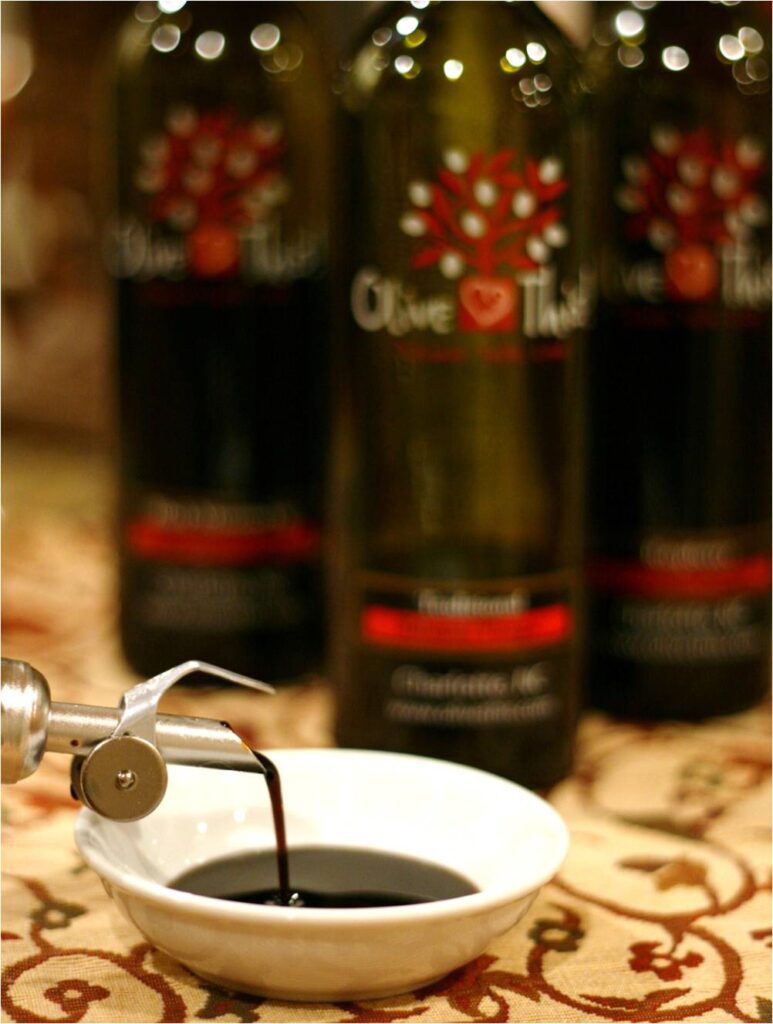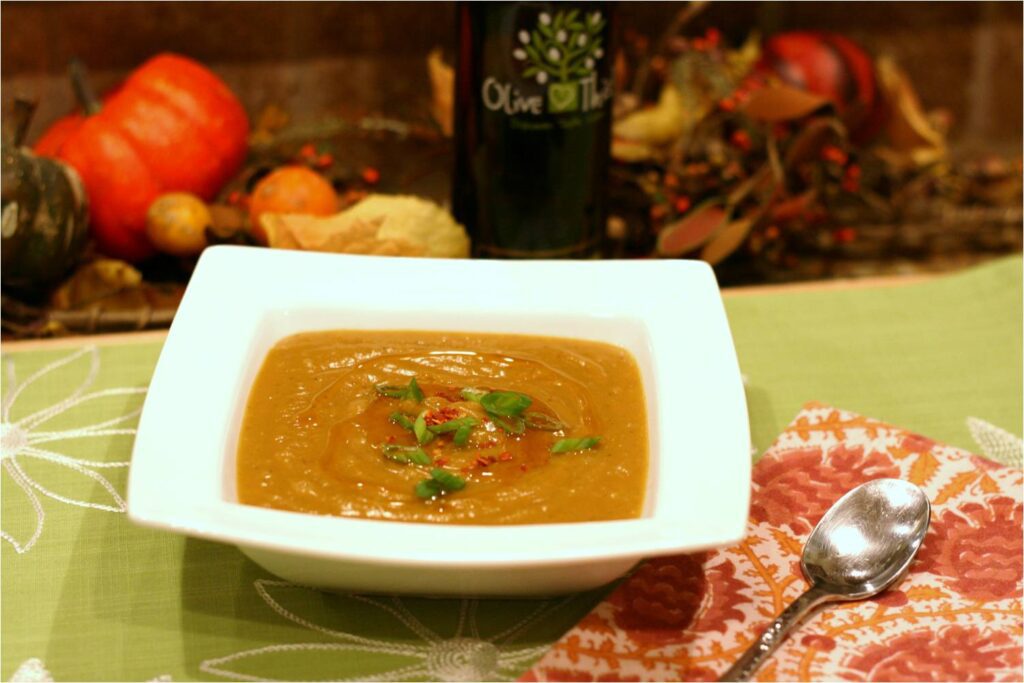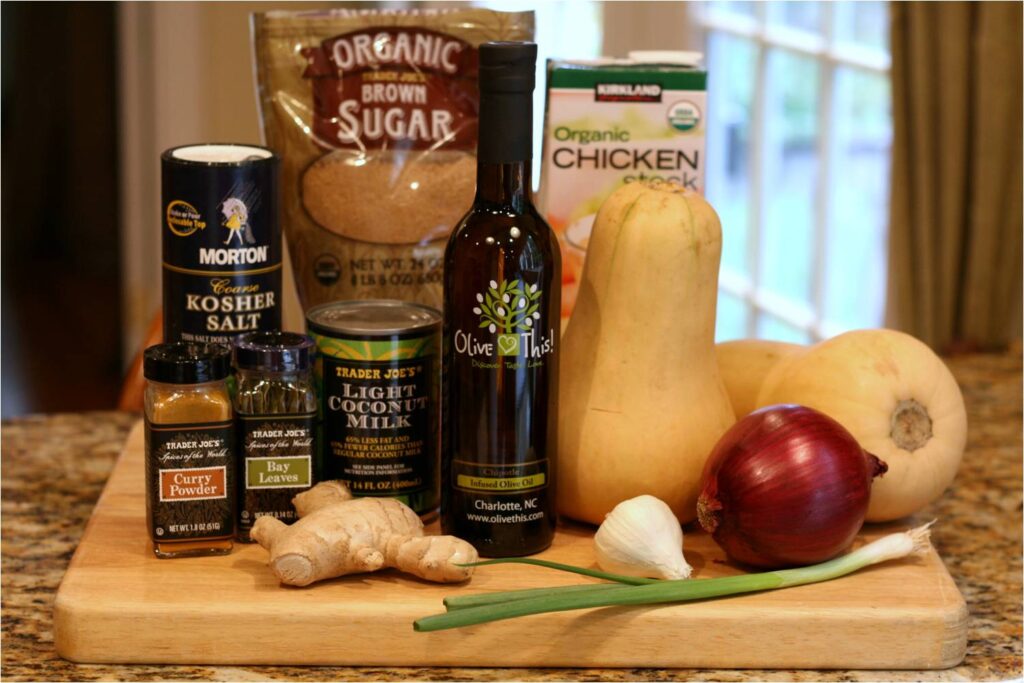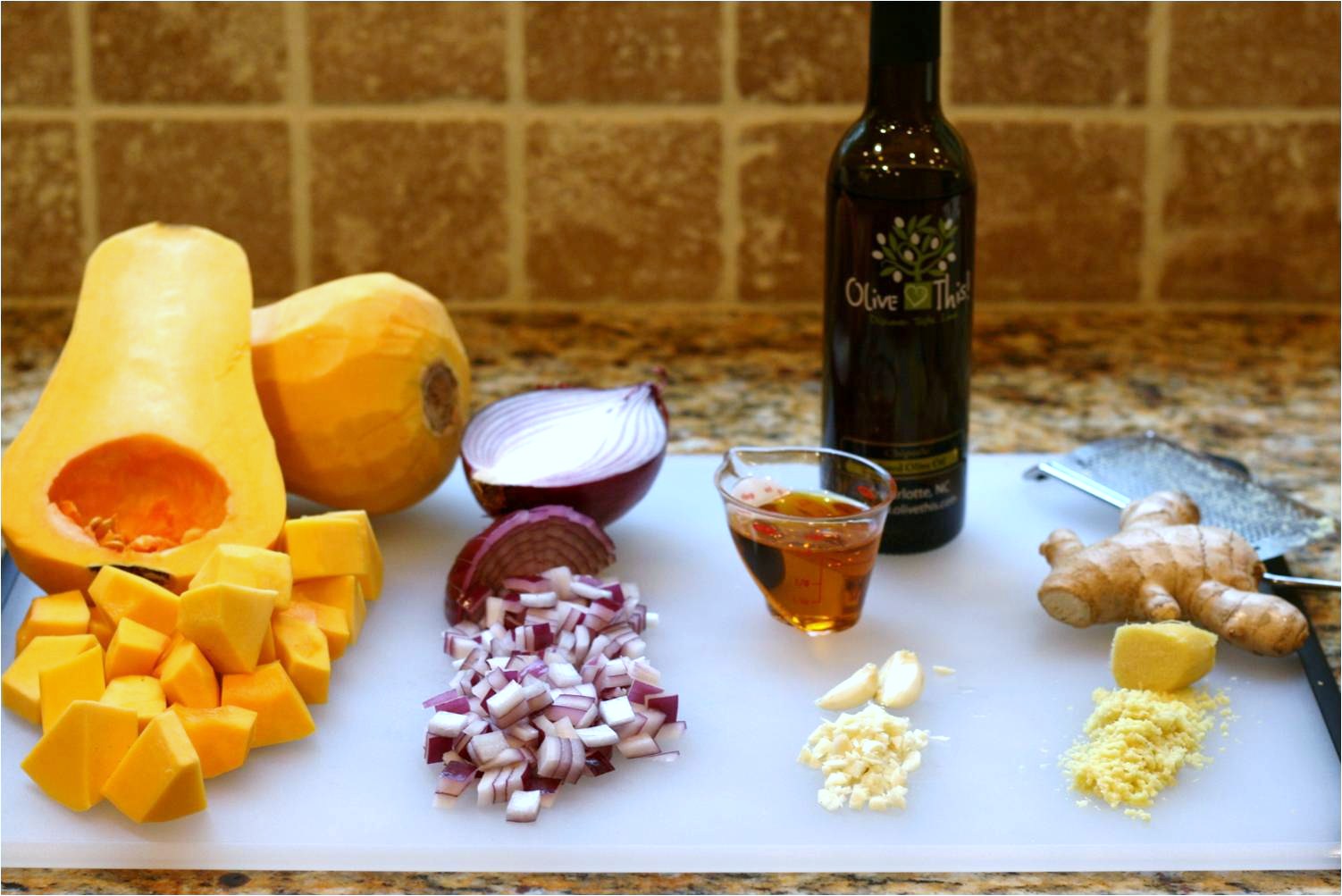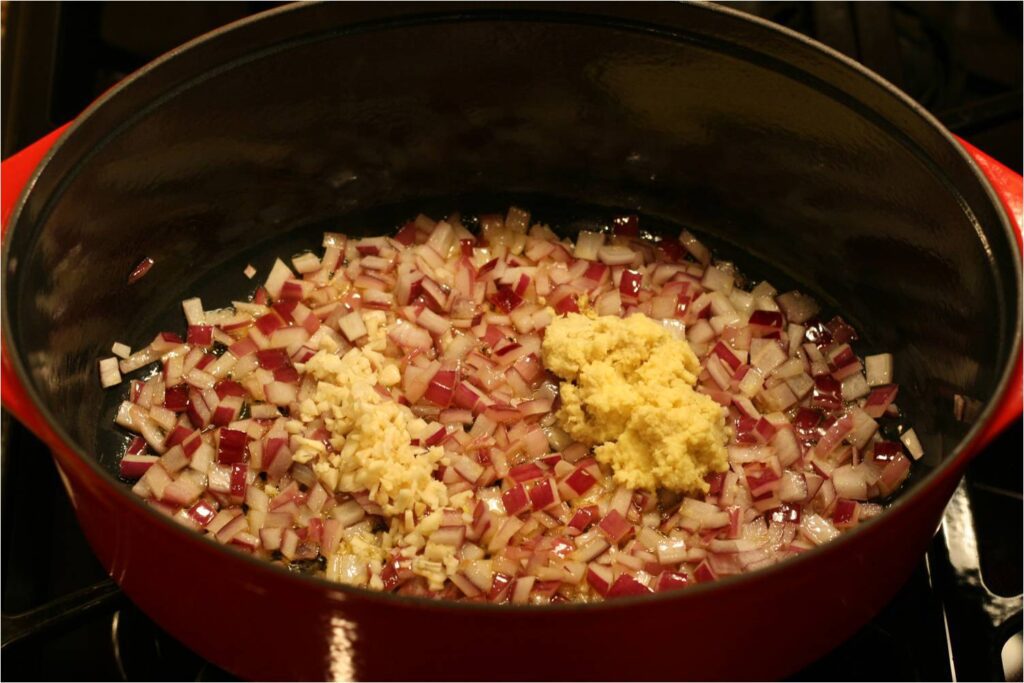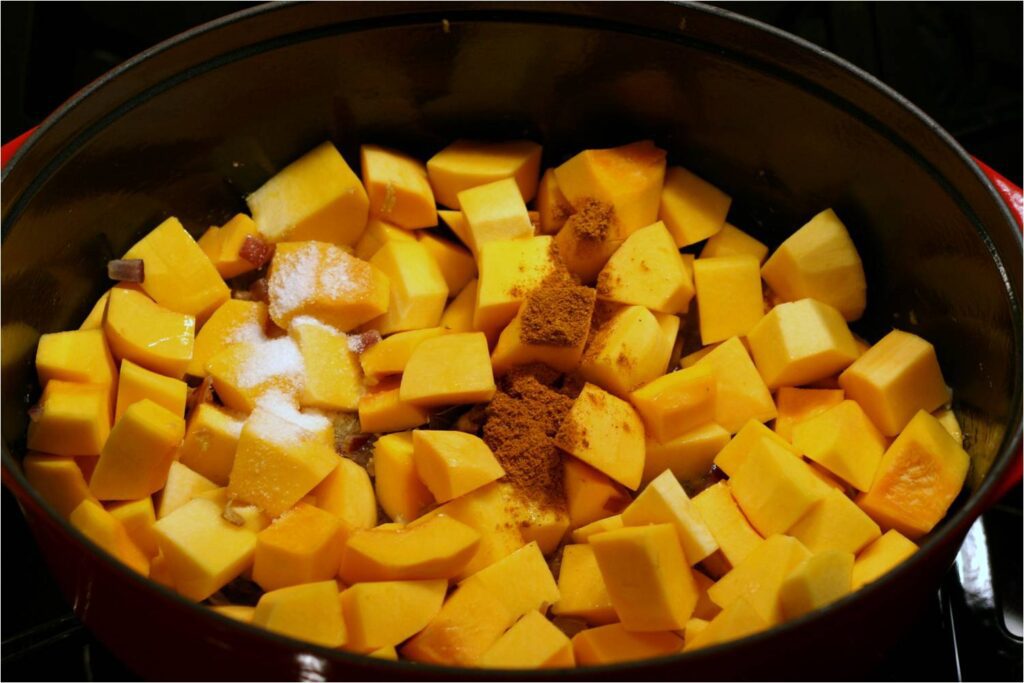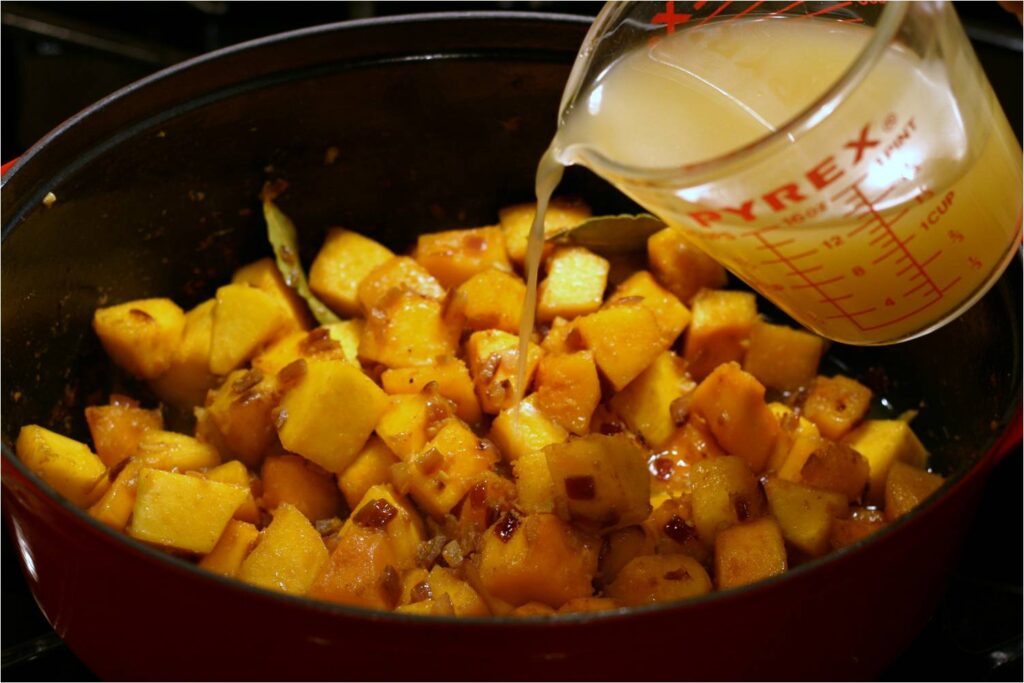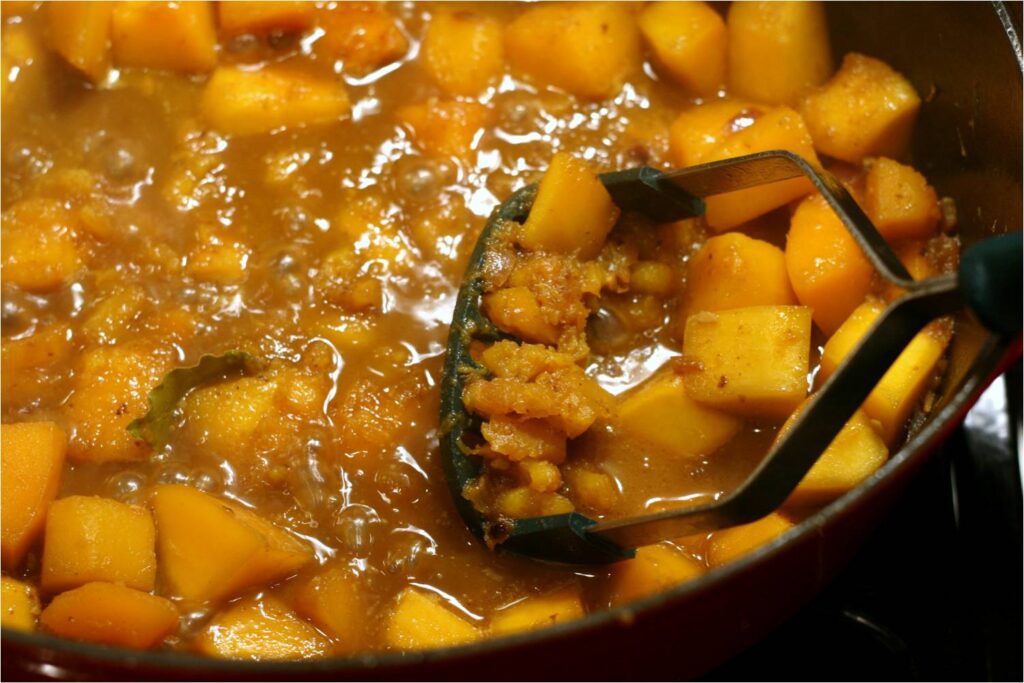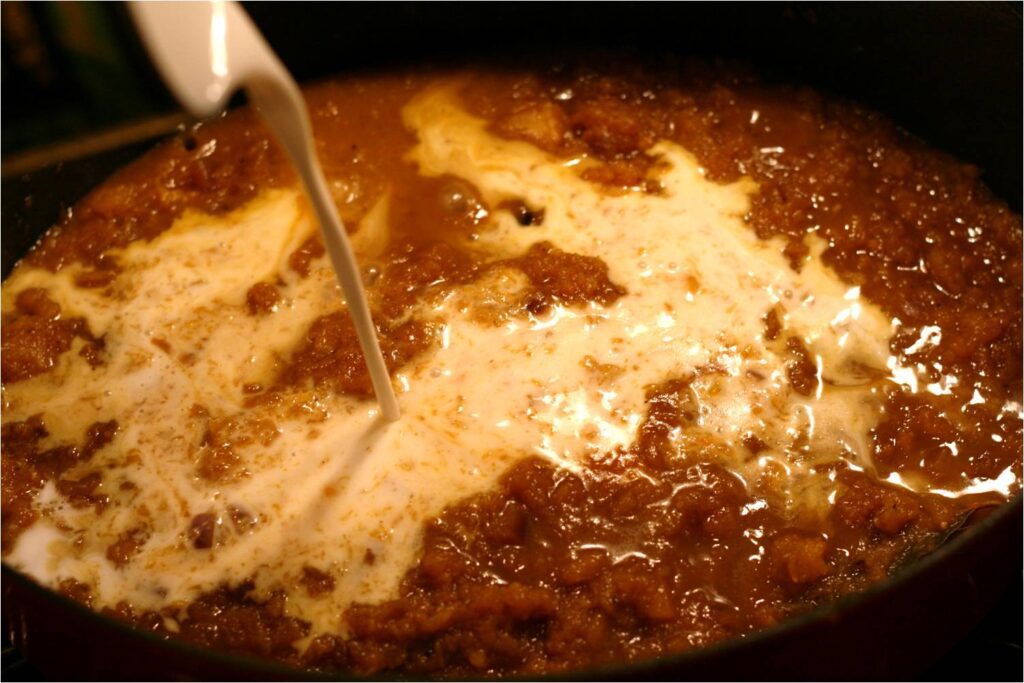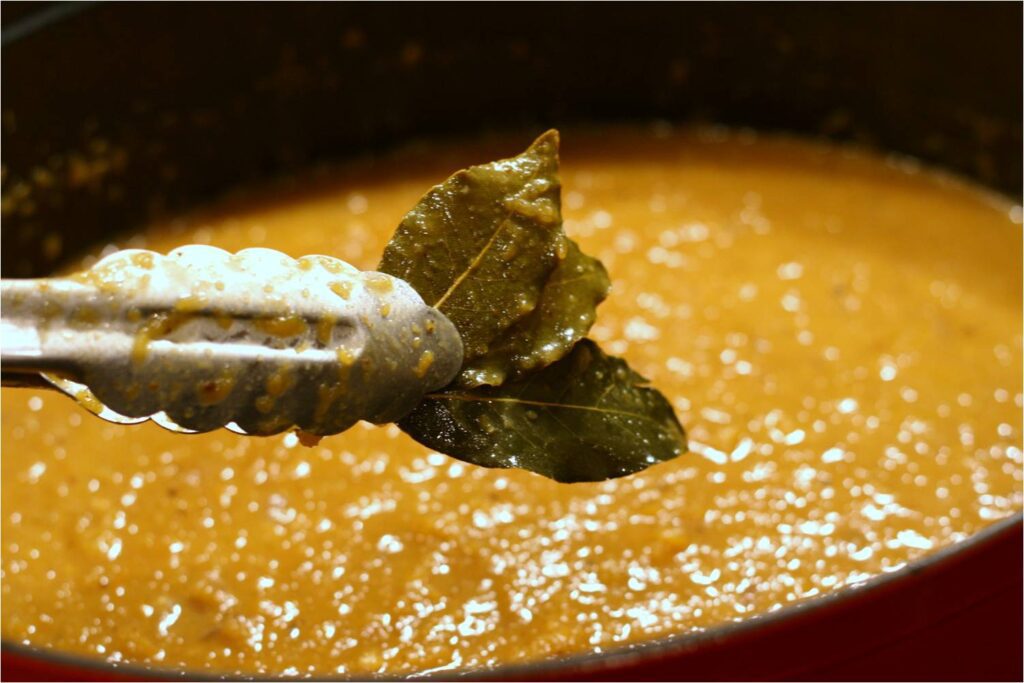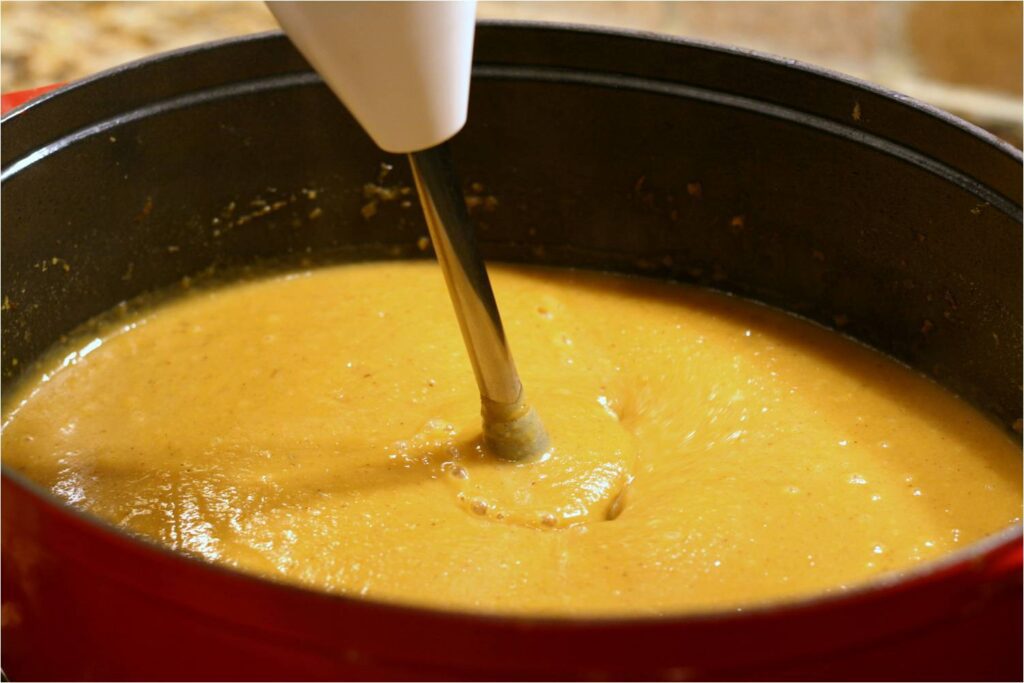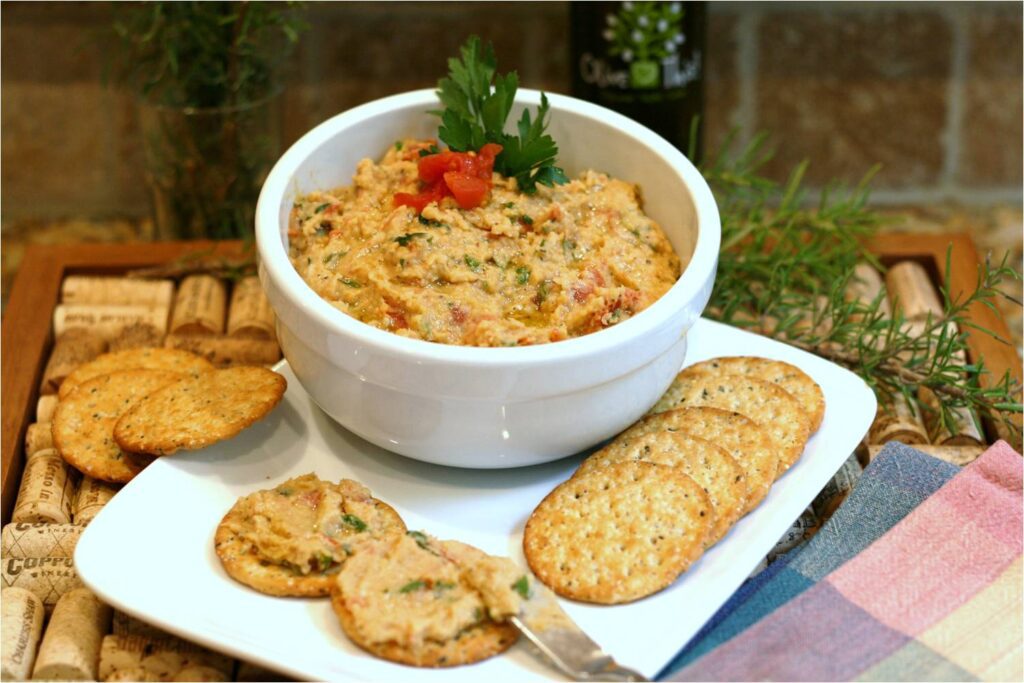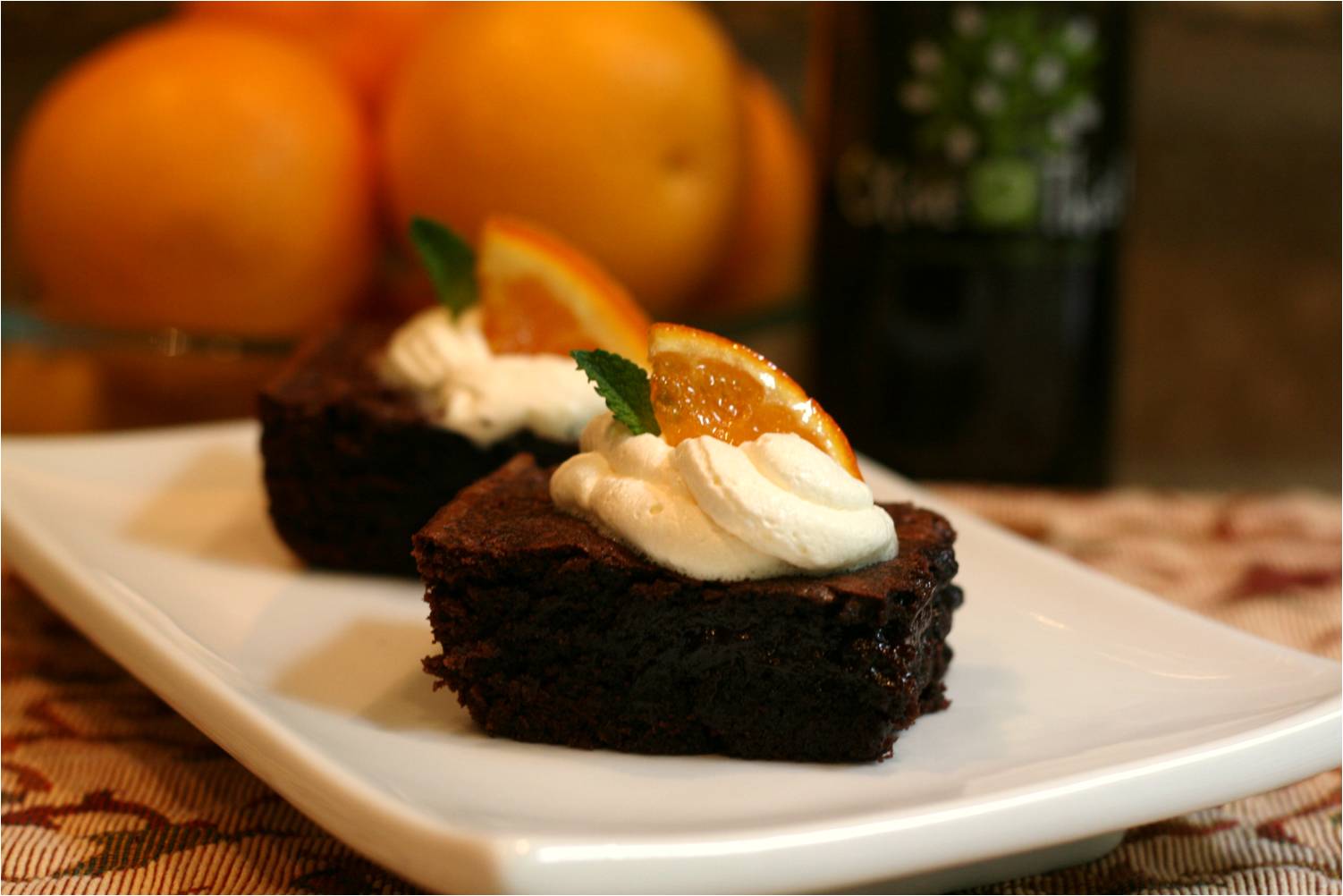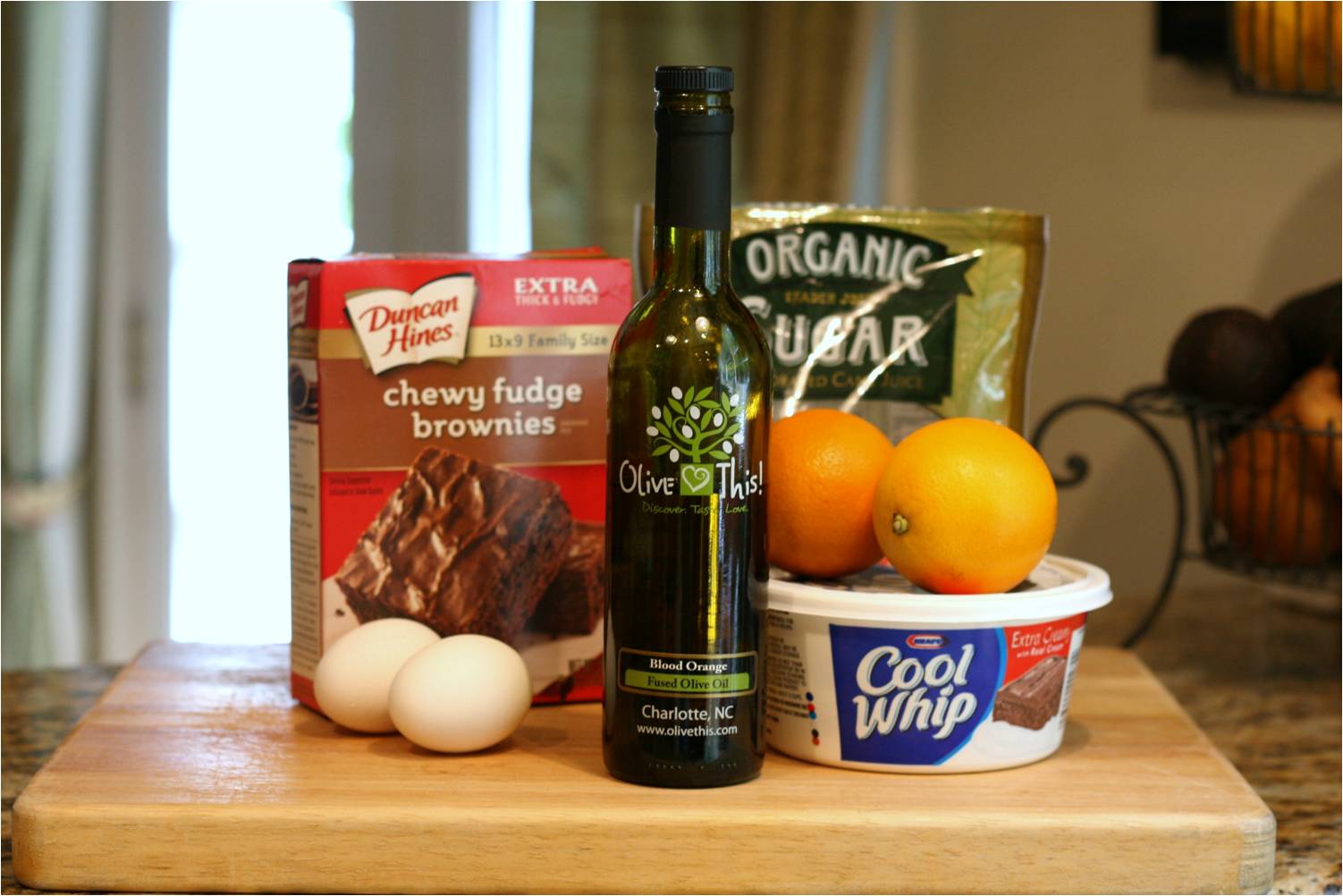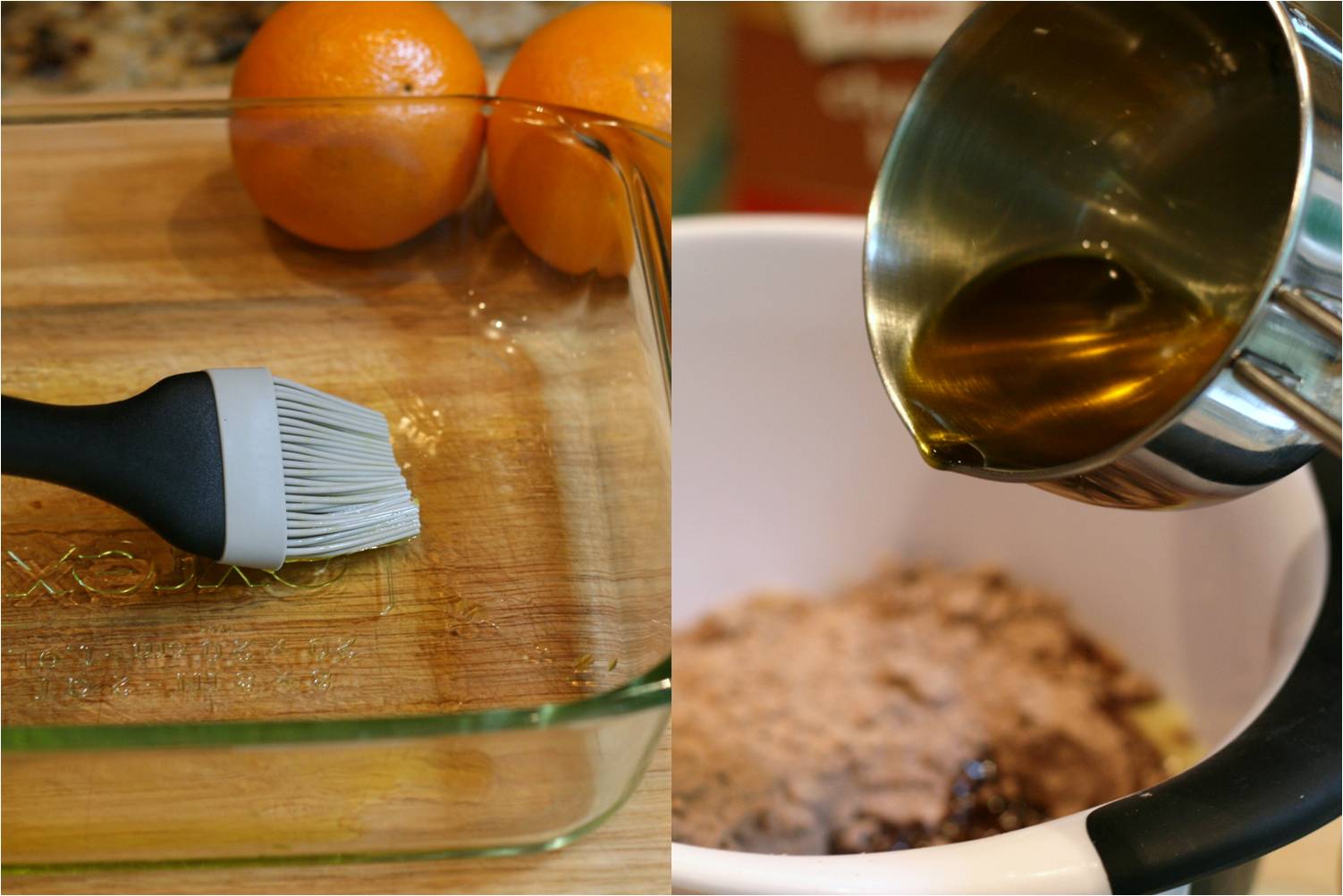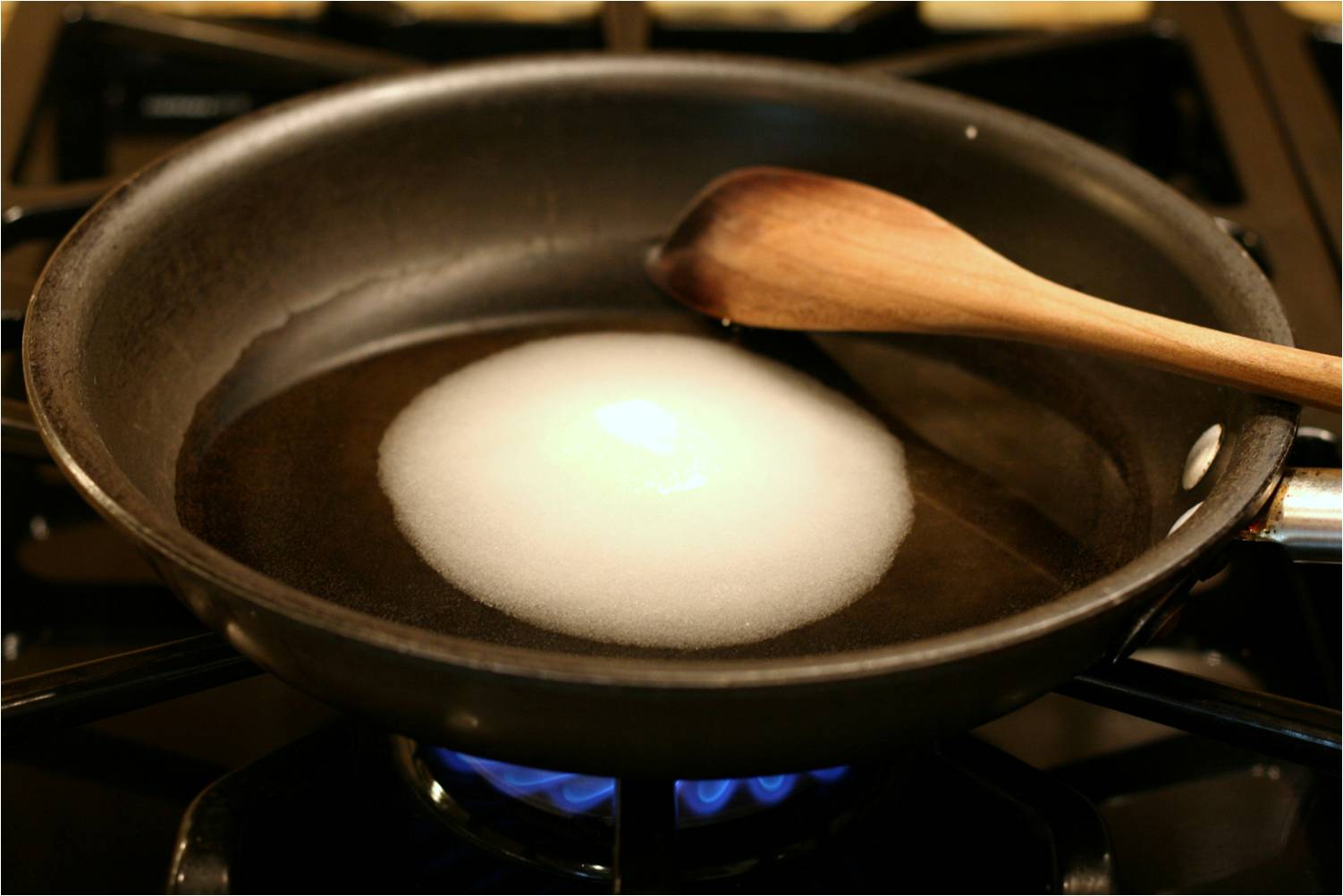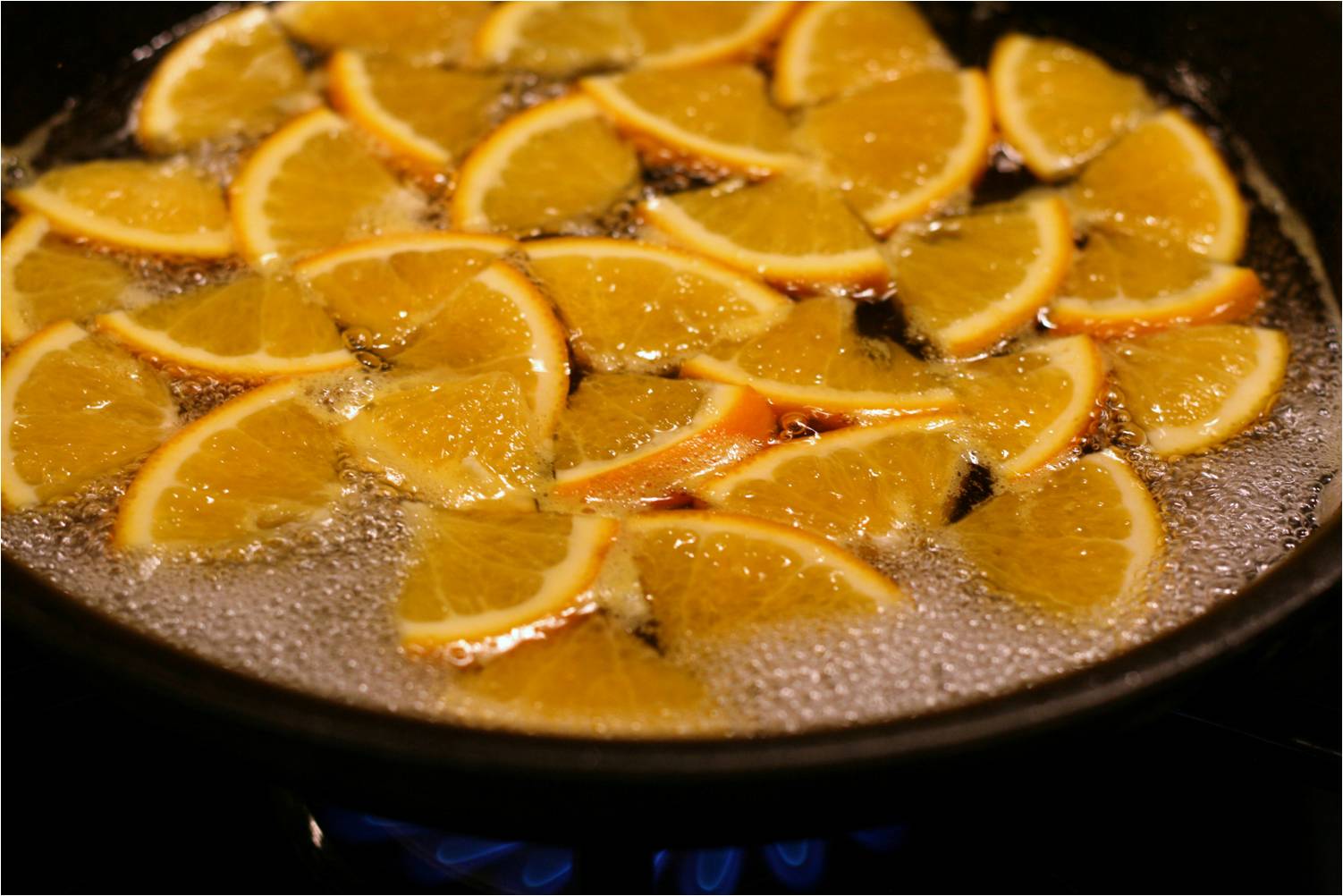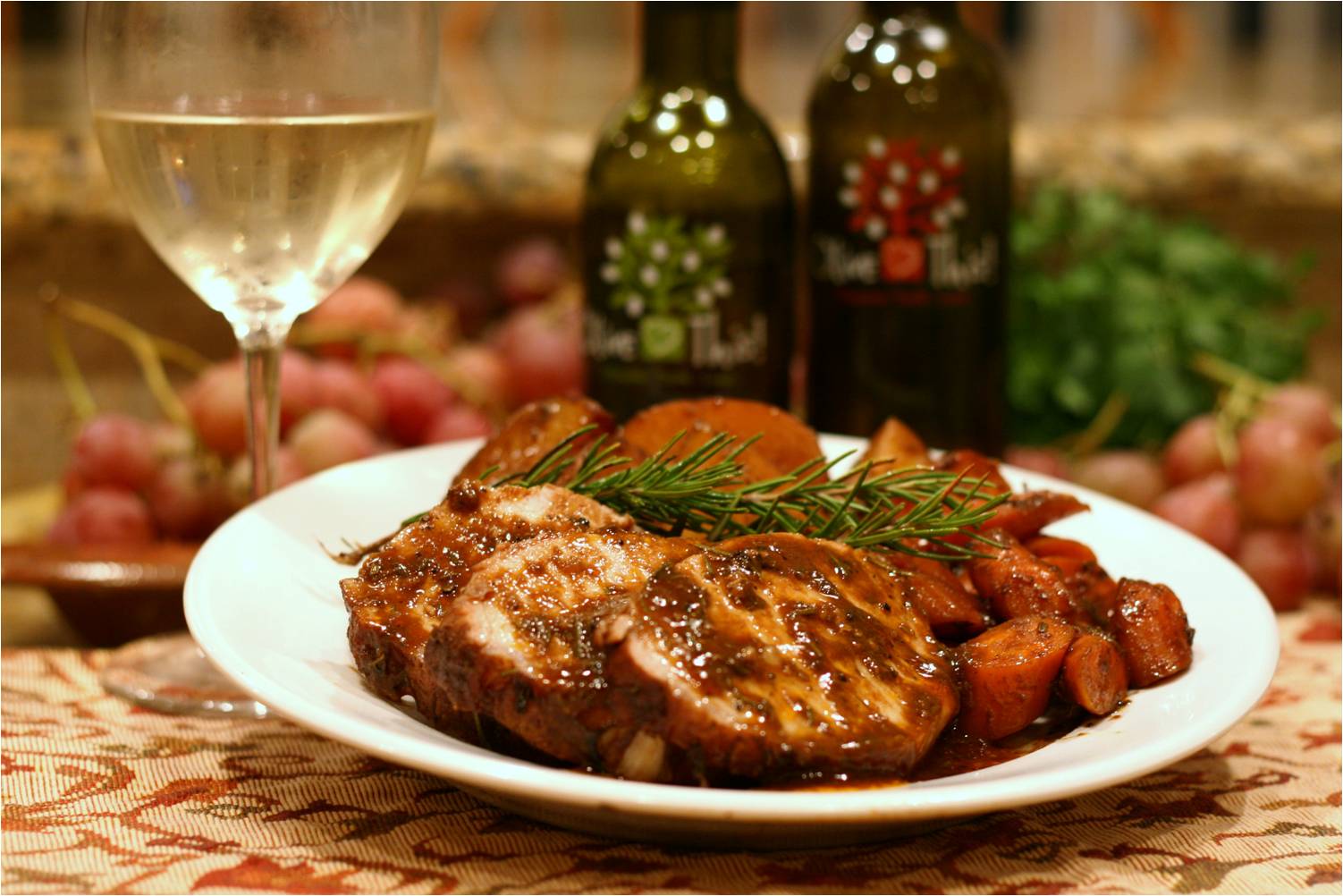Last year we made an Apple and Sausage Stuffing with our Wild Mushroom and Sage Olive Oil. This year the same olive oil is back but with a whole new cast of supporting actors. Thanksgiving has its traditions but every once in a while you want to mix it up just a little by trying something new. Want to try a new stuffing/dressing? These healthy ingredients come together to offer such great flavor and it just might be possible that the caramelized onions are the surprise standouts of this dish. Slow cooking naturally sweet onions in good quality olive oil brings out rich flavor from an otherwise basic ingredient. Take it a step further and enhance the caramelization by using our high quality, aged balsamic vinegar to finish it off. For ideal texture and flavor, dry out the breadcrumbs by either letting them sit on the counter for a day or two or in the oven for 45 minutes. Consistent with most of our other recipes this time of year, this dish can be made ahead – up to a day ahead. During the holidays, the more you can make ahead the less stress on that special day and the more time to spend with your guests!
INGREDIENTS
- 1 pound of good quality, crusty pumpernickel bread cut into ¾-inch cubes, about 6 cups
- 4 tablespoons Olive This! Wild Mushroom and Sage Olive Oil, divided, plus extra for preparing the baking dish
- 1 large red onion, or 1 medium and 1 small, about 1½ cups chopped (see instructions)
- 1 large yellow onion, or 1 medium and 1 small, about 1½ cups chopped (see instructions)
- 3 tablespoons Olive This! Fig Balsamic Vinegar
- 3 ribs of celery, chopped
- 10 ounces sliced white mushrooms
- 1½ tablespoons fresh thyme leaves, or ½ teaspoon dried
- ¼ teaspoon ground marjoram
- 1½ cups of uncooked farro, prepared according to package directions
- ½ cup sliced almonds
- 1½ cups chicken stock
- 2 eggs, lightly beaten
- 1½ teaspoon salt
- 1 teaspoon pepper
DIRECTIONS
If you let your bread cubes dry out on the counter for a few days (as described above) then skip this step and go right on to the next. Otherwise, adjust oven rack to center position and heat oven to 300 degrees F.
Cube enough pumpernickel bread to measure out 6 cups. Spread in a single layer onto a baking sheet and dry out in the oven for about 30 minutes. After removing the bread from the oven, increase the heat to 400 degrees F. Let the bread cubes completely cool. While they’re in the oven, however, you can start on caramelizing your onions and preparing the farro.
Remove the stem side of the onion leaving the root end to hold it all together. Cut the onion in half lengthwise through the root. Placing the cut side down, make cuts about ½ inch apart from the outside layer towards the center (see photo).
Next, make one slice crosswise cutting the slices in half. Remove the root end by making a V-cut. Repeat for the rest of the onions.
In a large skillet (preferably not non-stick), heat 2 tablespoons of olive oil over medium-high heat until shimmering. Add the onion slices, stirring to coat well. Spread out the onions to cook in an even layer. Stir occasionally remembering to spread them out to cook after each stir.
After about 12-15 minutes, the onions will begin to brown on the edges. Reduced the heat to medium-low and continue cooking until the onions have caramelized to a nice brown color, about 15 minutes more.
While the onions are caramelizing, prepare your celery. Slice down each rib lengthwise splitting it in half. Chop them into ¼ inch pieces. Repeat for the rest of the celery and set aside. You can also start plucking the thyme leaves off their stems to measure out 1½ tablespoons.
Once the onions have caramelized, add the 3 tablespoons of balsamic and cook for an additional 5-10 minutes until the vinegar reduces by about half. Remove from heat and set onions aside. No need to wash the skillet just yet.
Make sure your oven is preheating to 400 degrees F. Using the same skillet, heat the remaining 2 tablespoons of olive oil over medium-high heat until shimmering. Add the chopped celery and mushrooms and sauté stirring occasionally, until softened, about 5-8 minutes. Add in thyme leaves and marjoram and cook until fragrant, about 1 minute. Transfer celery/mushroom mixture to a large mixing bowl.
To the celery/mushroom mixture add the cooled bread cubes, caramelized onions, lightly beaten eggs, cooked farro, the ½ cup of sliced almonds, 1½ teaspoons of salt, 1 teaspoon of black pepper. Pour in the 1½ cups of chicken stock and gently toss to fully combine the wet and dry ingredients evenly.
Transfer mixture to a 13 by 9-inch baking dish lightly brushed with olive oil. Cover with foil and bake for 20 minutes. Remove foil and continue to bake for another 30 minutes or until the tops are begin to brown and crisp up a bit.
Remove from oven and let cool for about 10 minutes before serving. Garnish with chopped celery leaves. Enjoy!
IF MAKING AHEAD: Prepare ingredients and assemble into oiled baking pan. Cover tightly with plastic wrap and refrigerate for up to 1 day. When ready to bake, place stuffing on counter for 30 minutes to bring to room temperature. Replace plastic wrap with foil and bake according to above directions.
SERVES 10-12
Have a comment? We’d love to hear from you. Have you tried this dish? Do you have a variation that you think others will enjoy? Leave us a comment below.

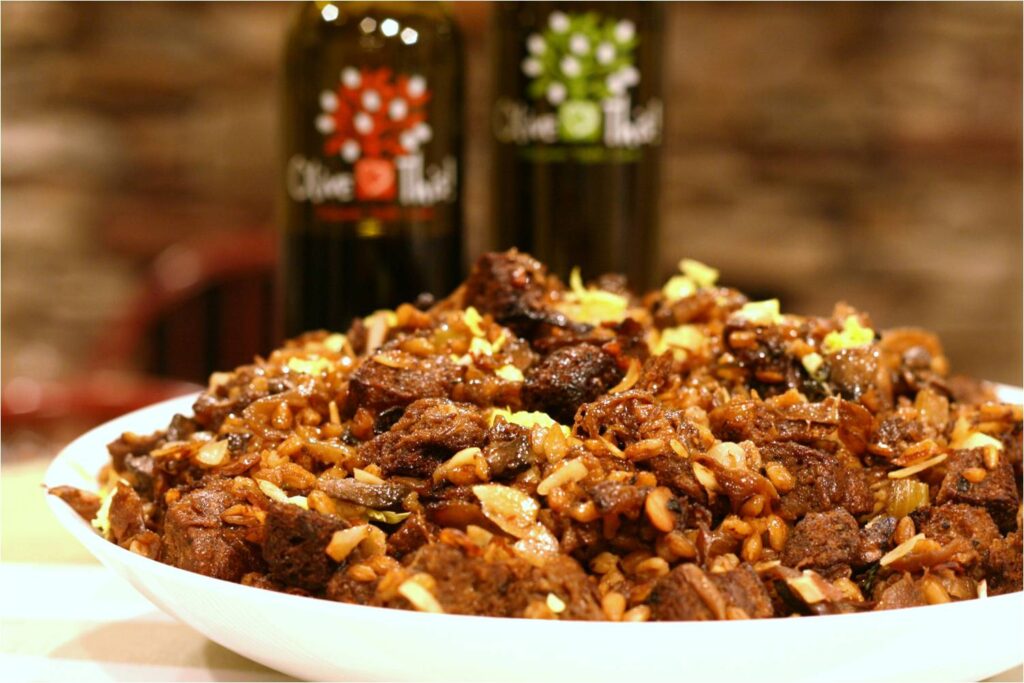
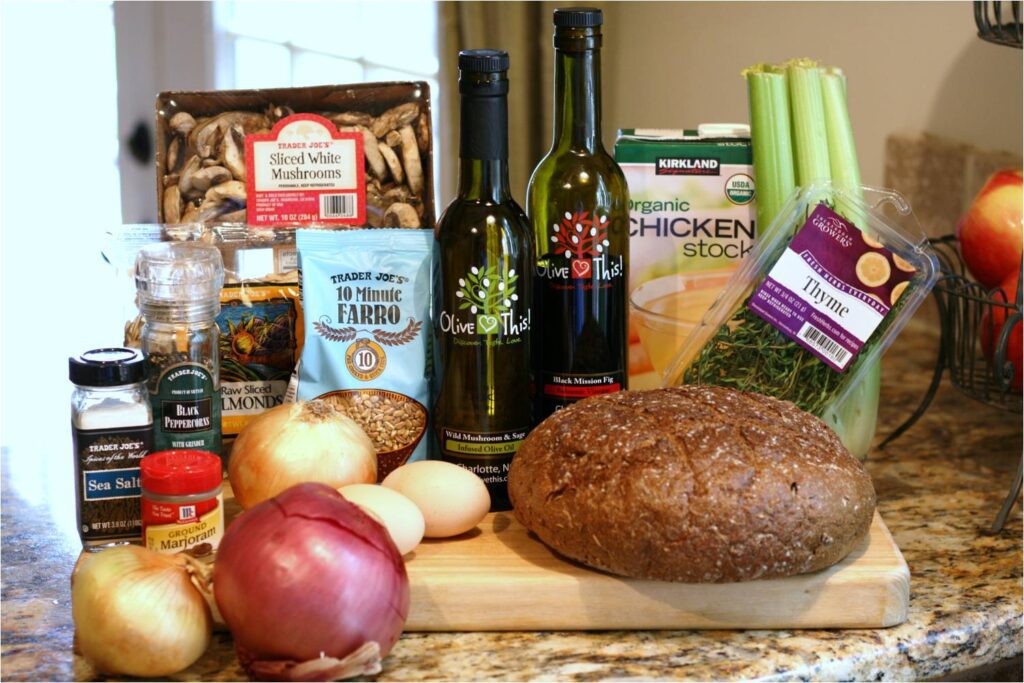
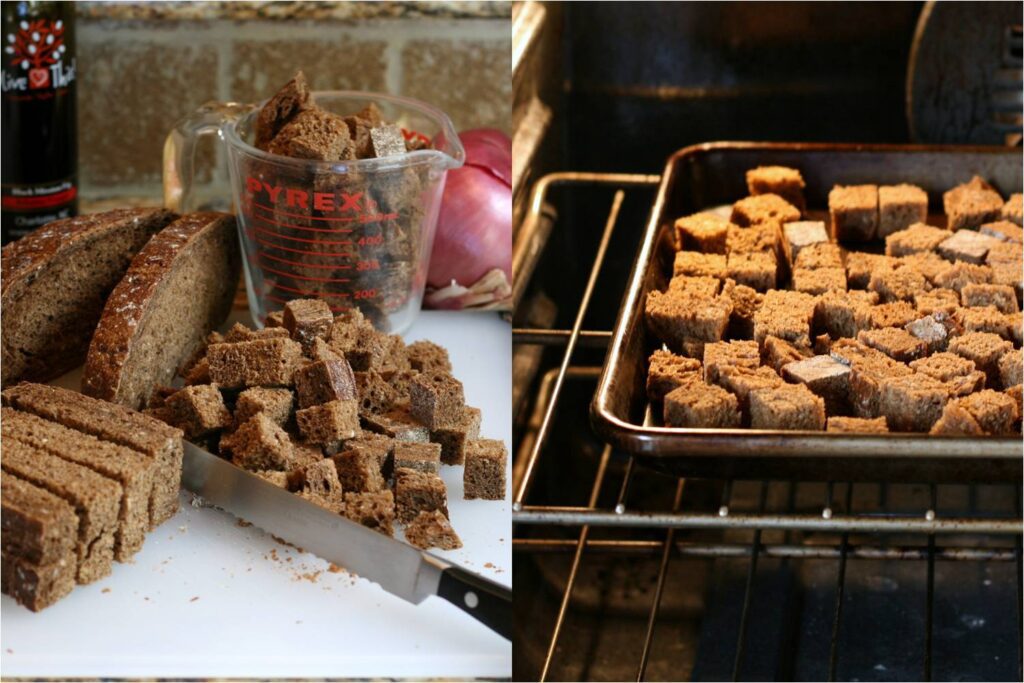
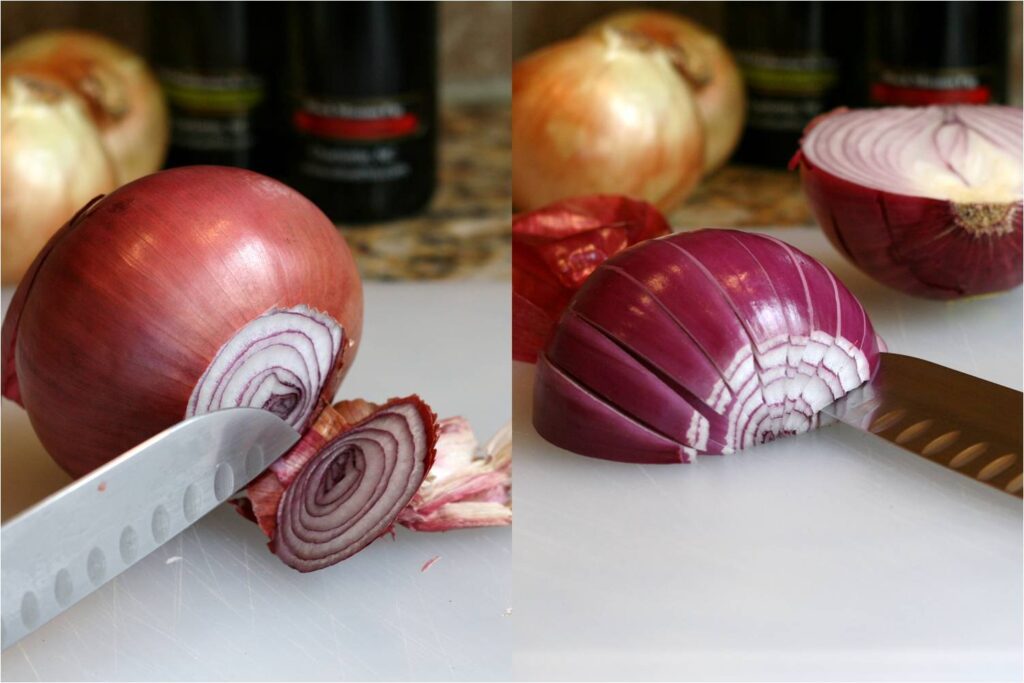
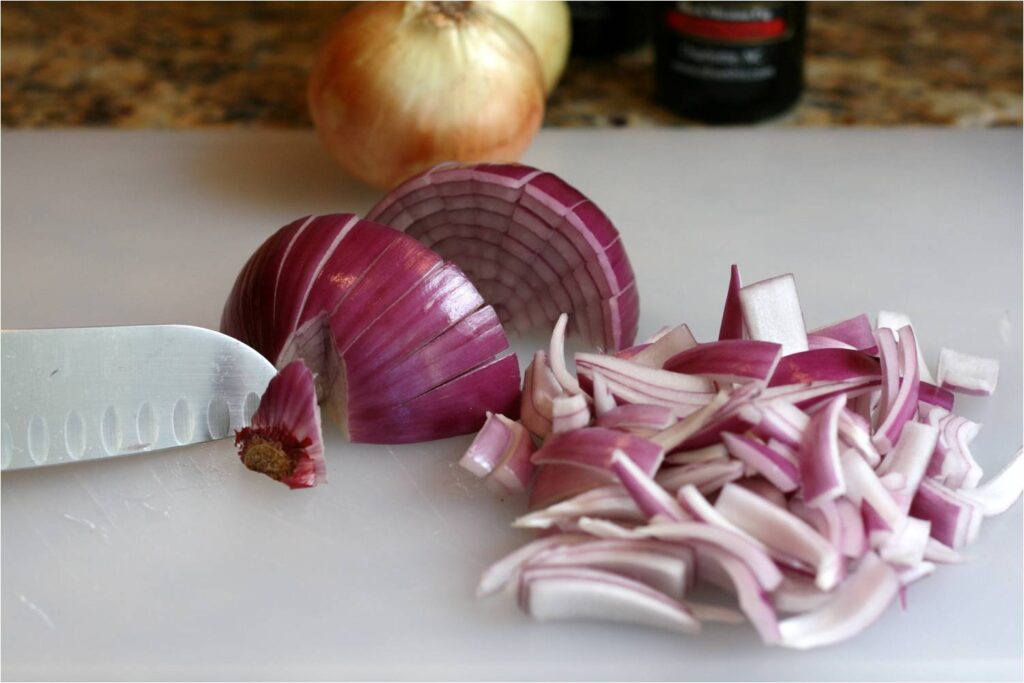

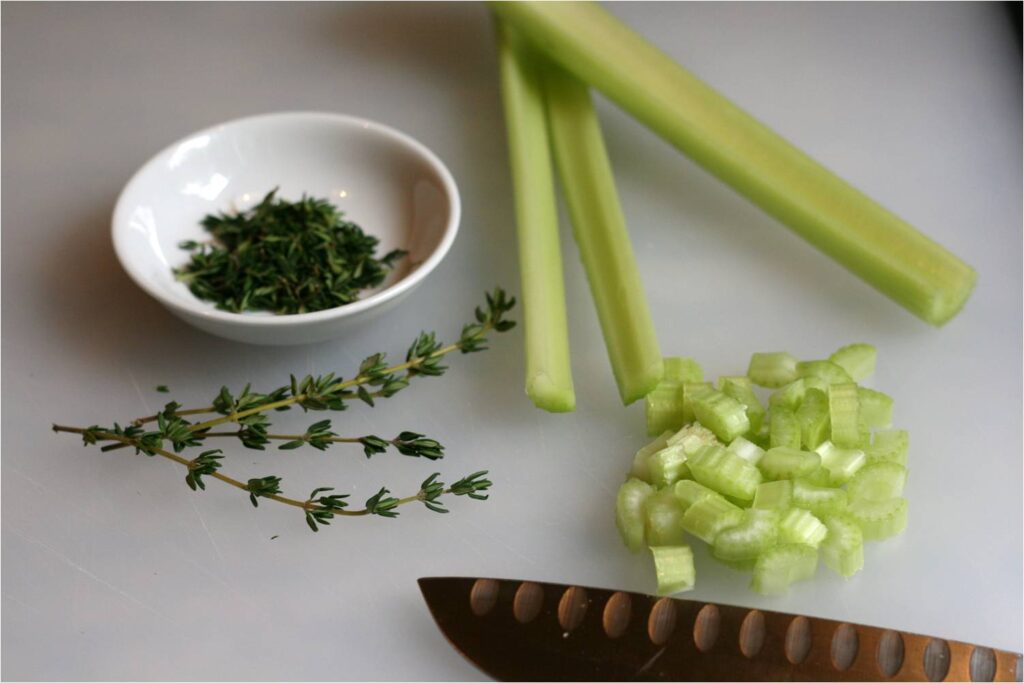
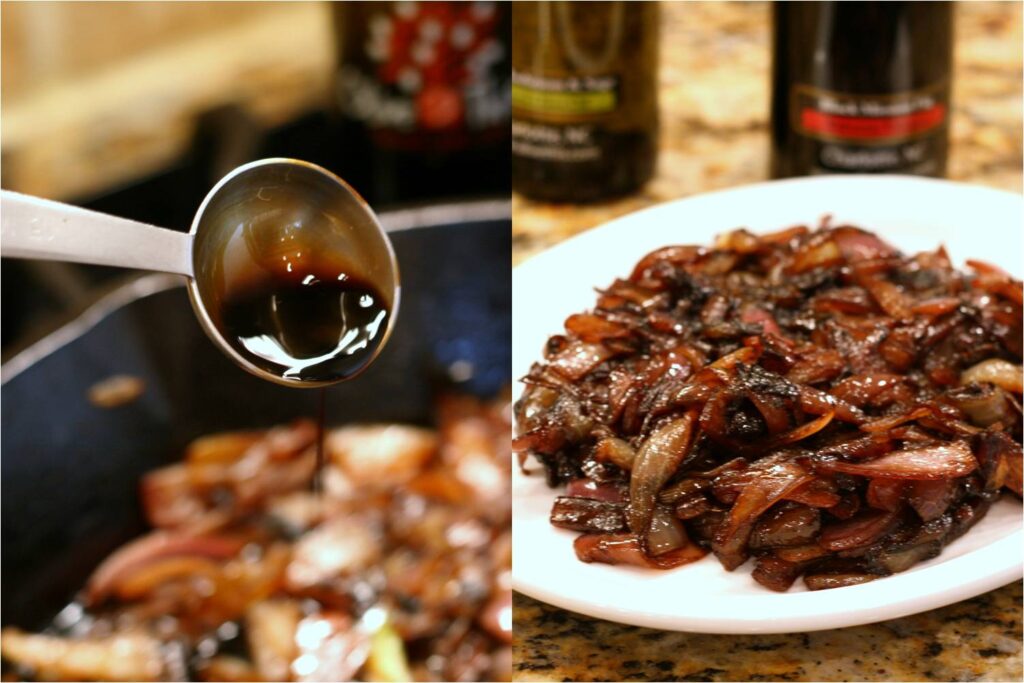
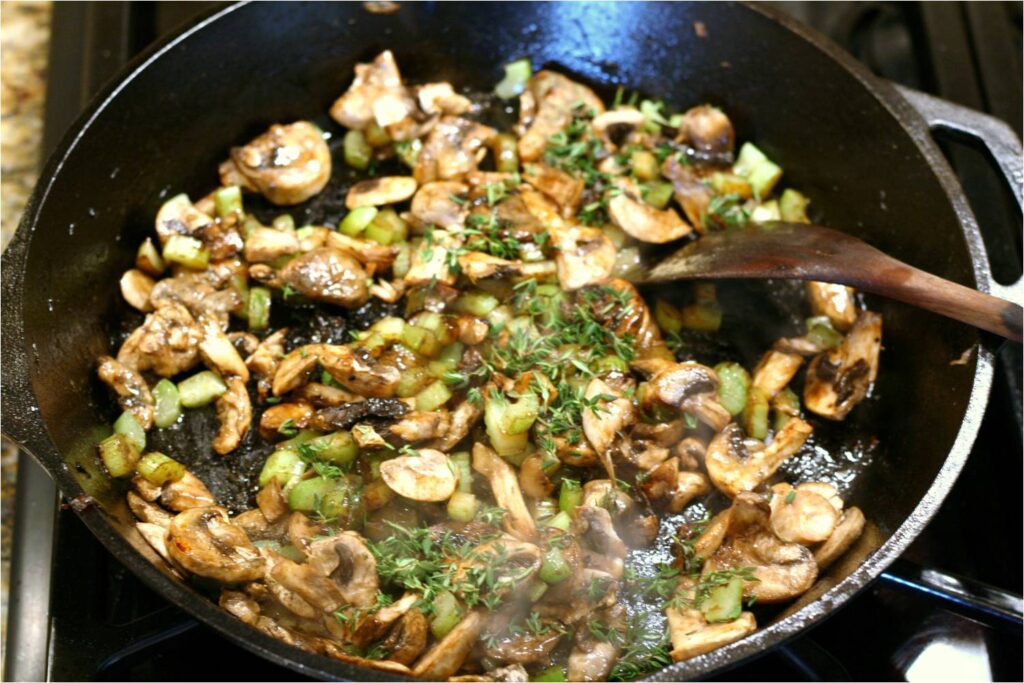
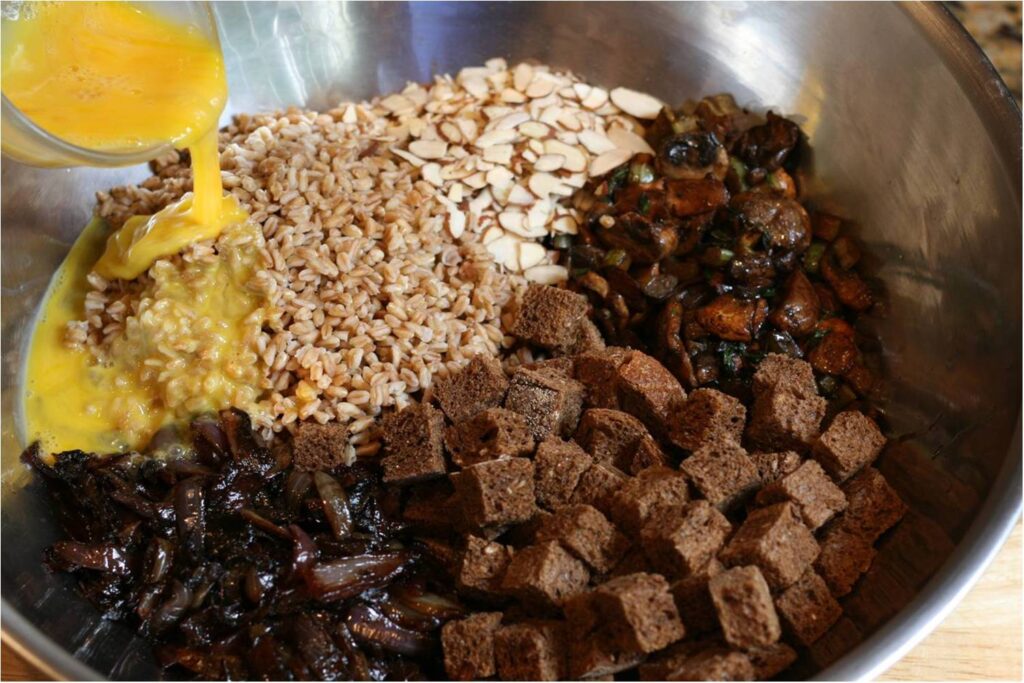
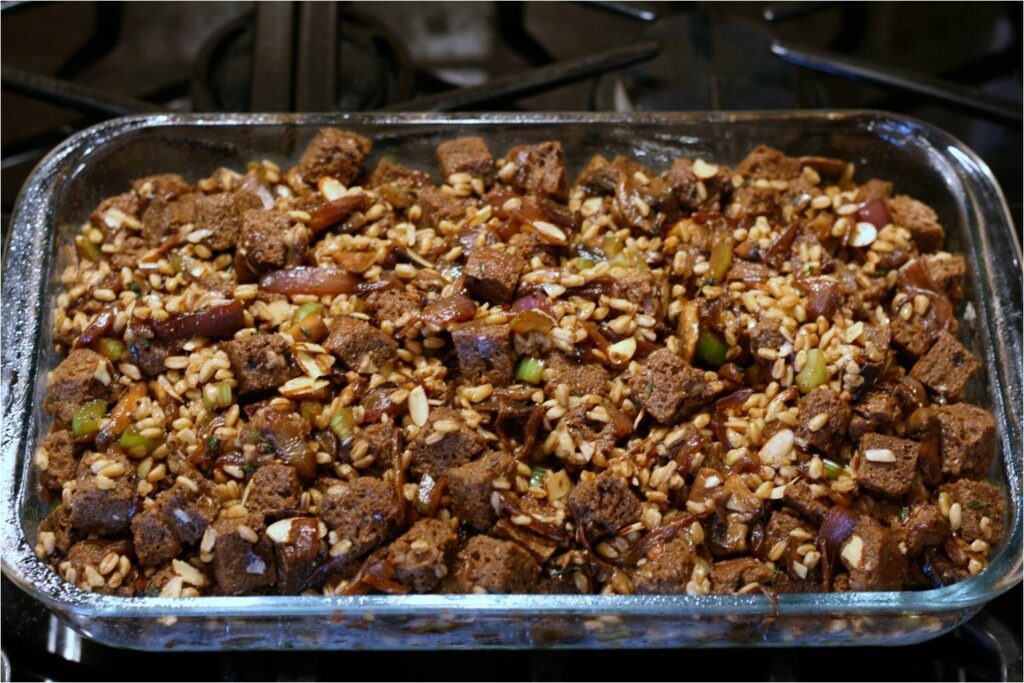
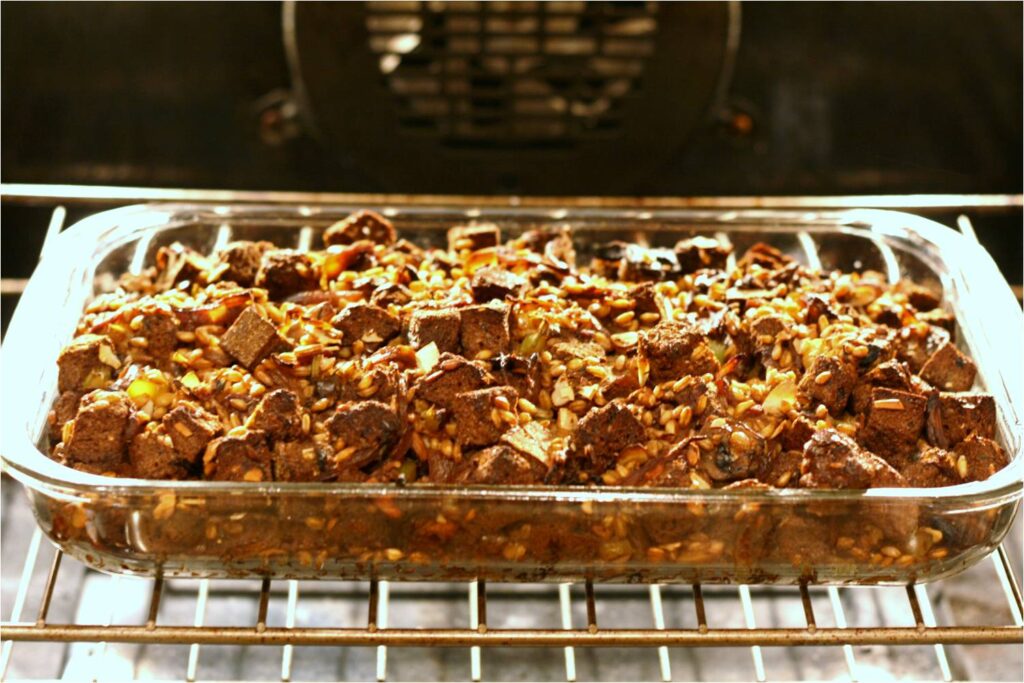
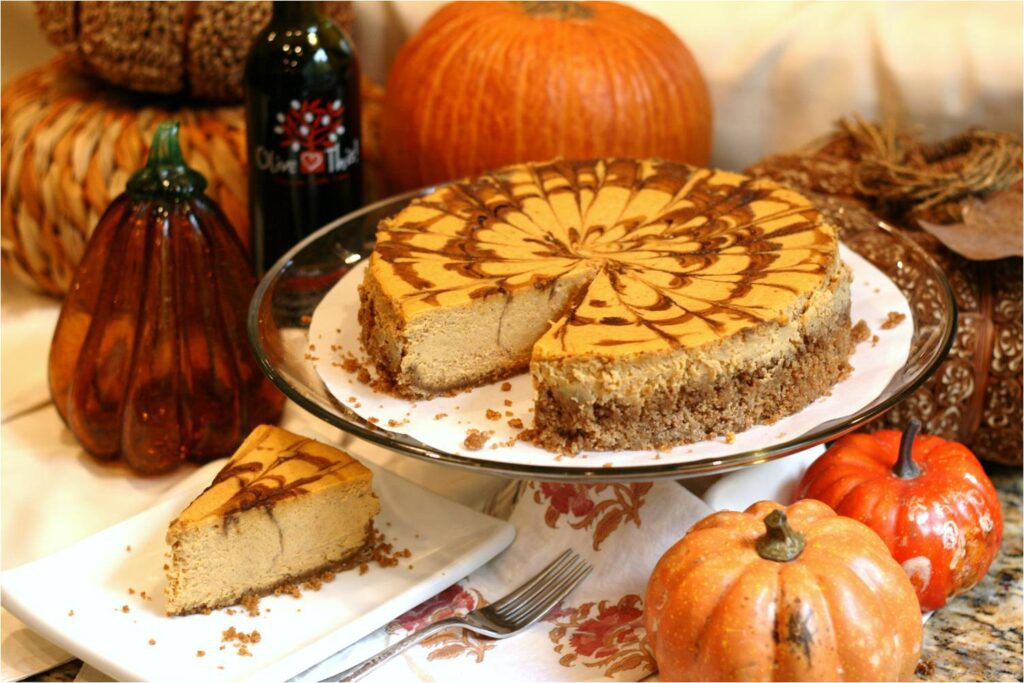
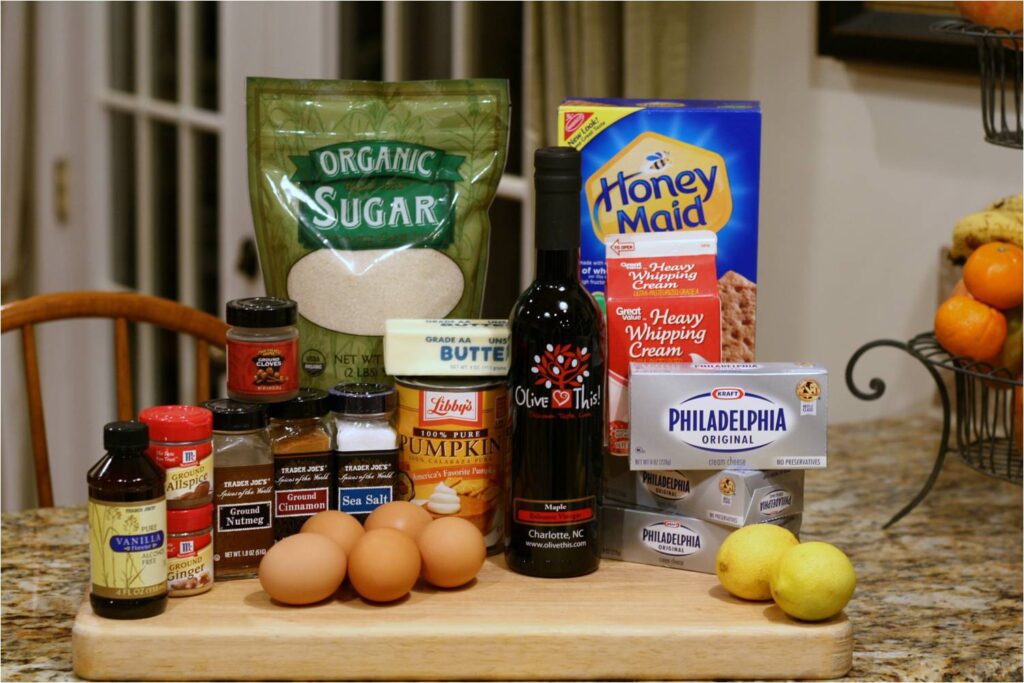
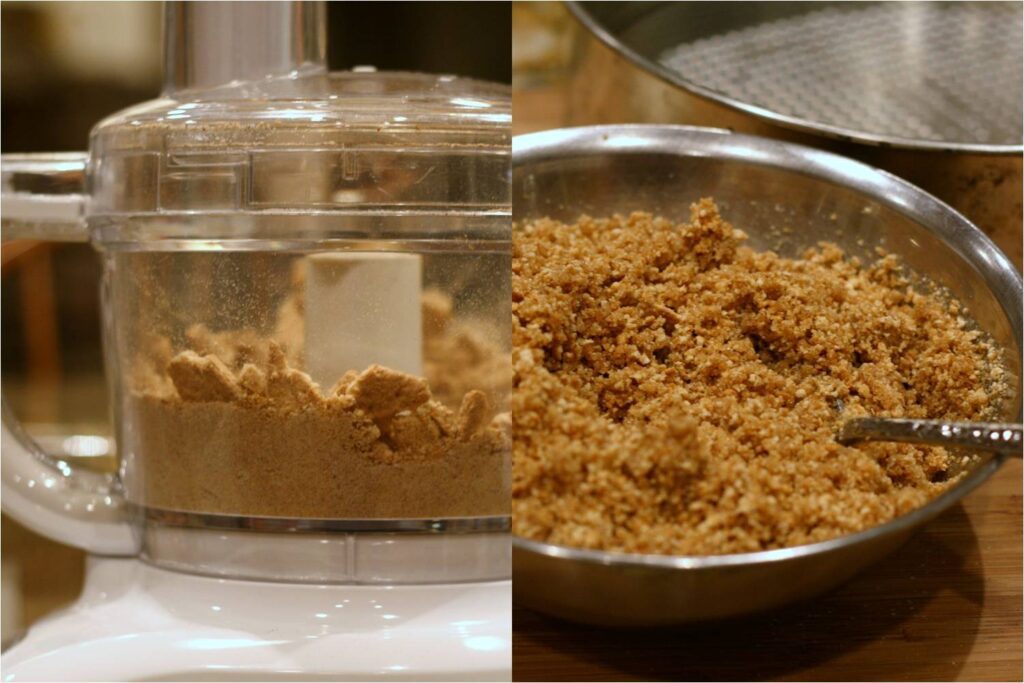

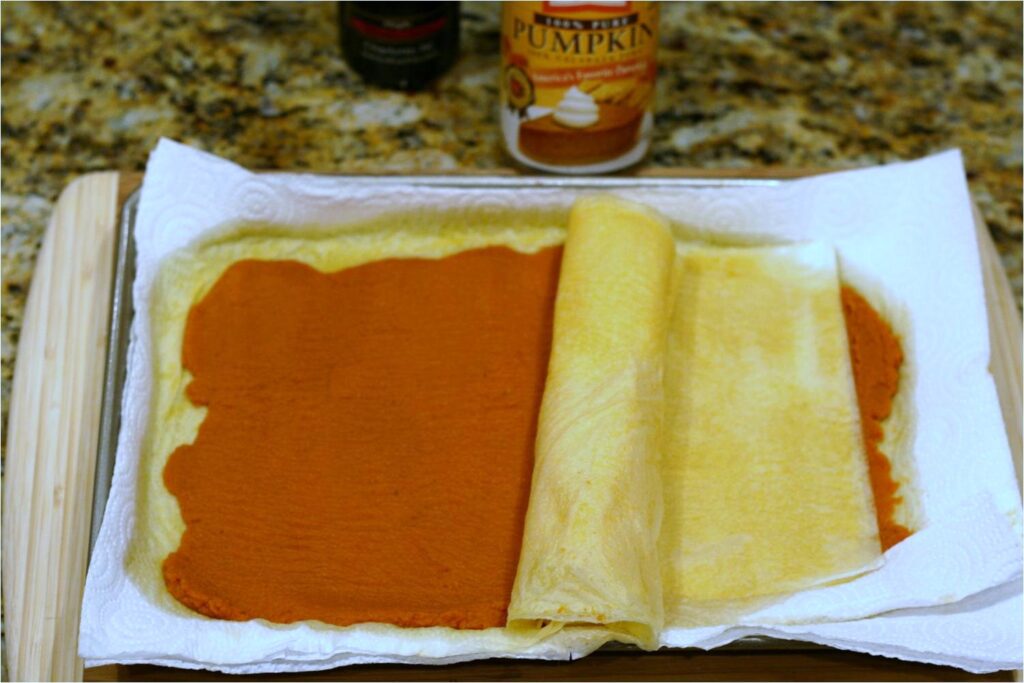
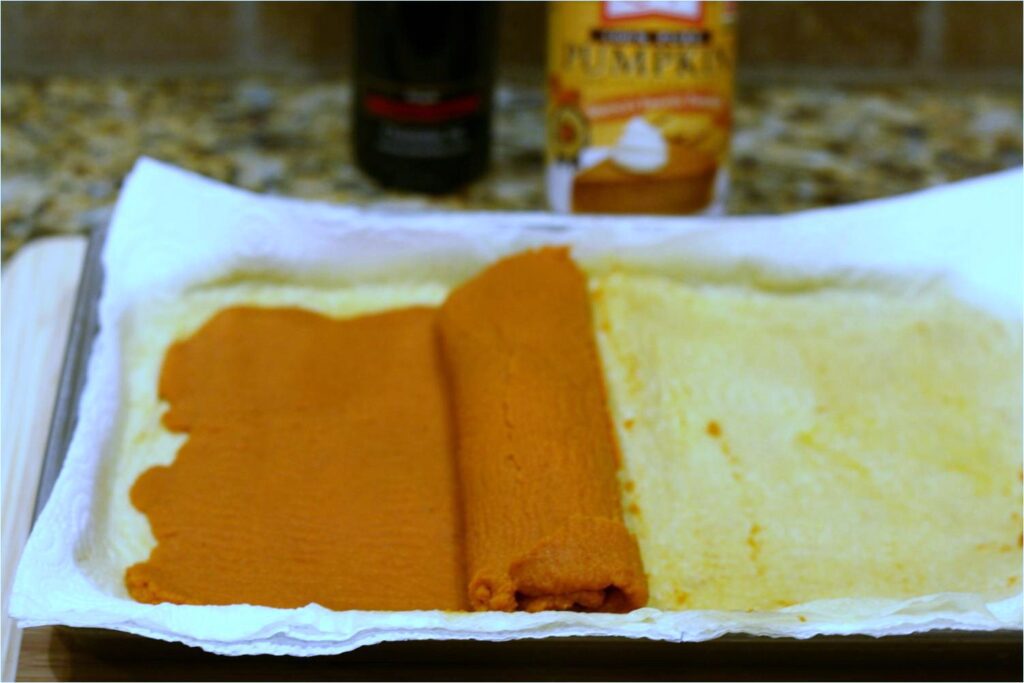
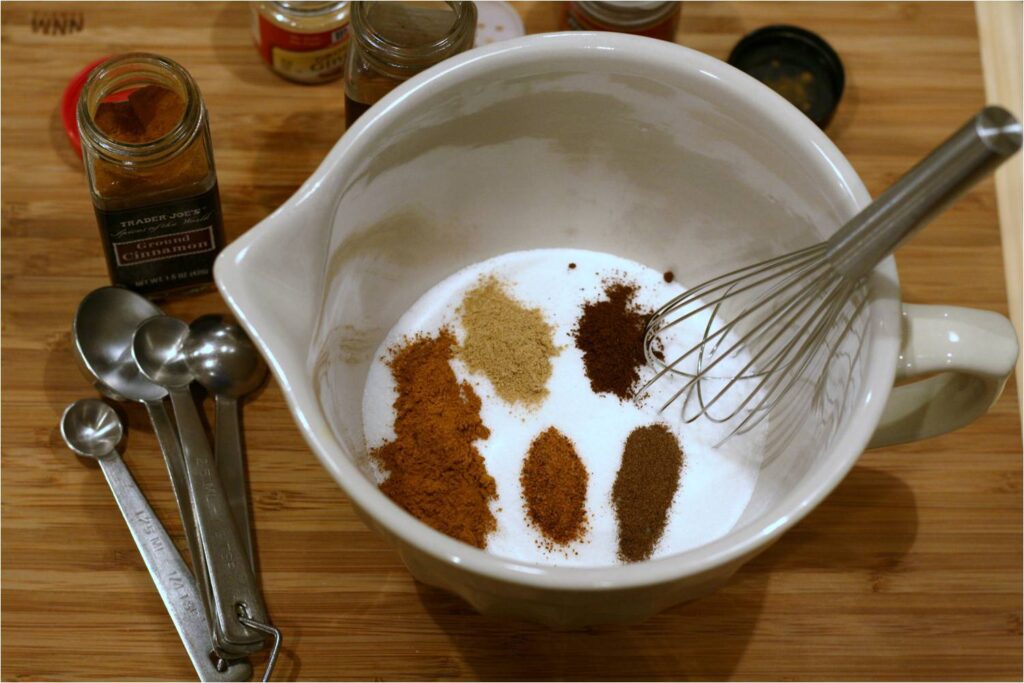
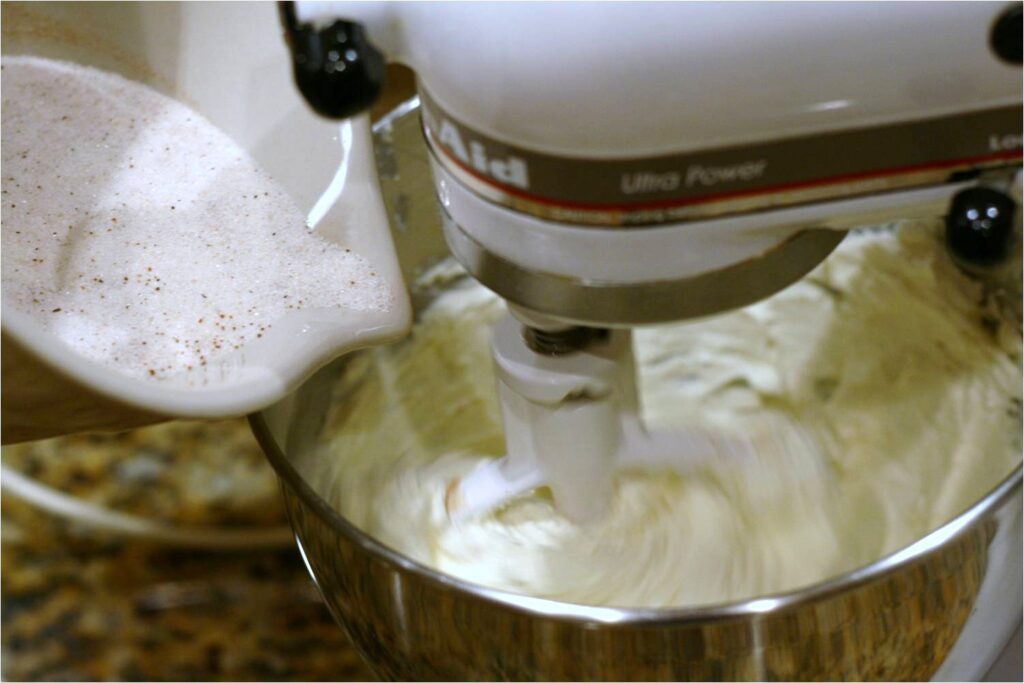
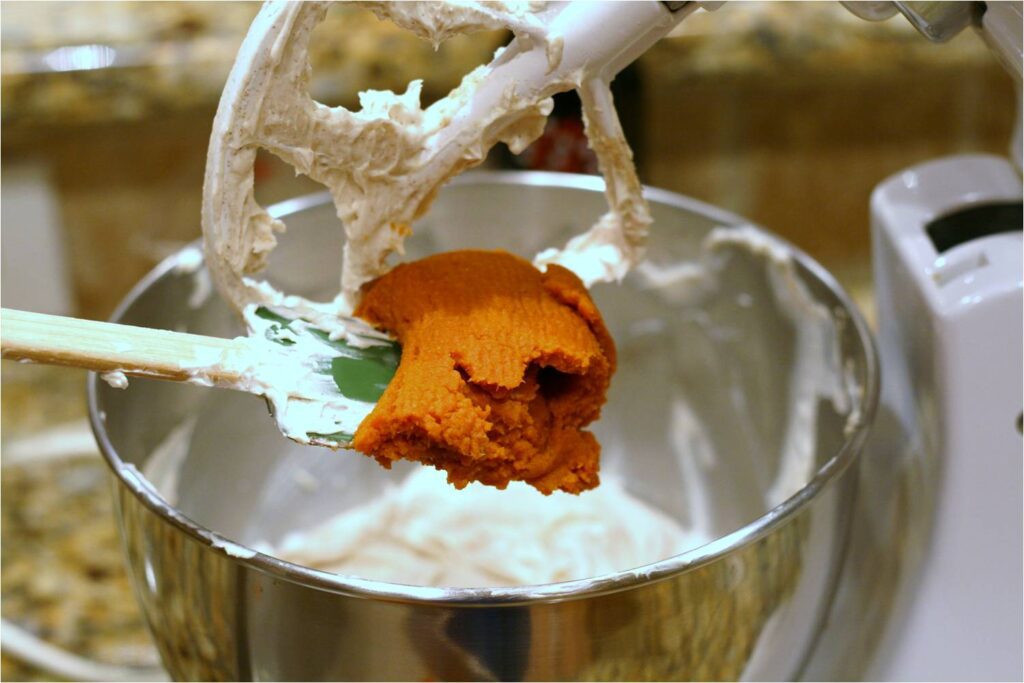

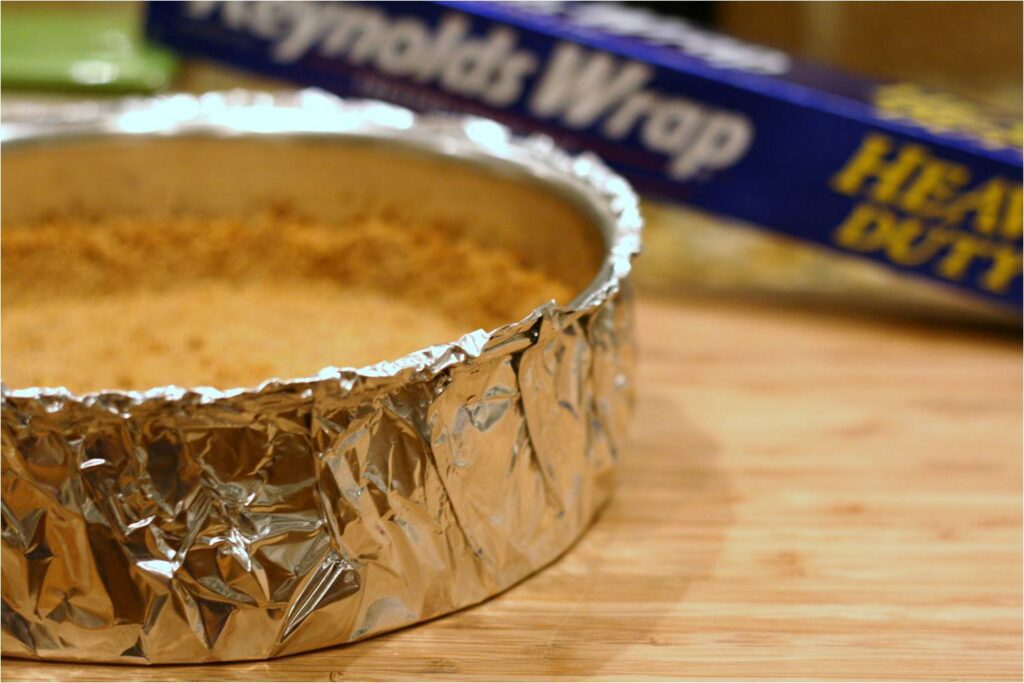
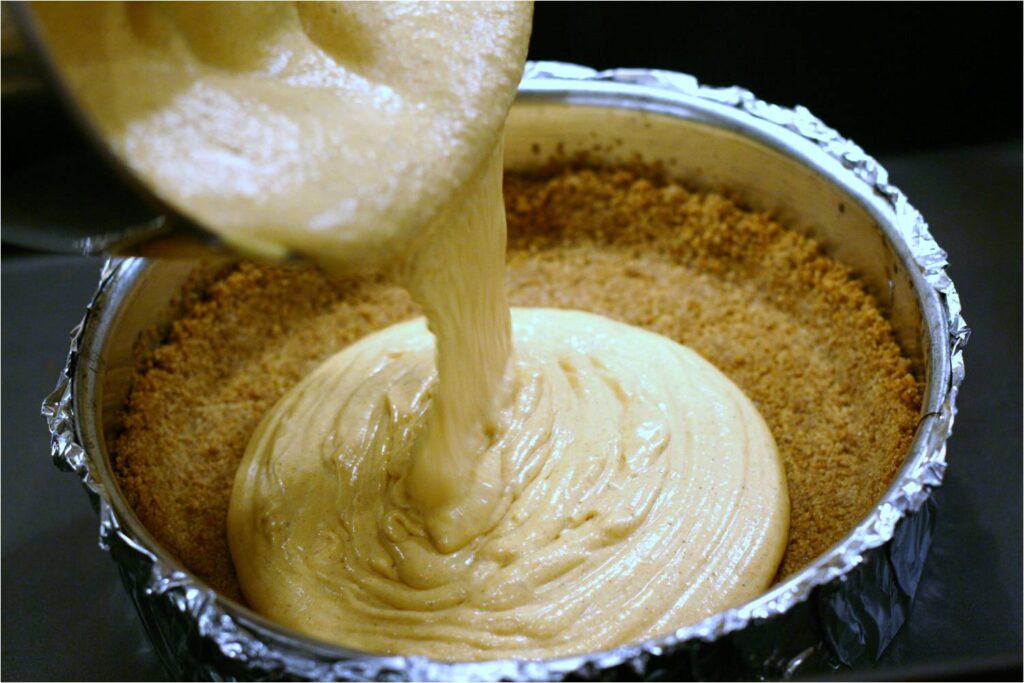
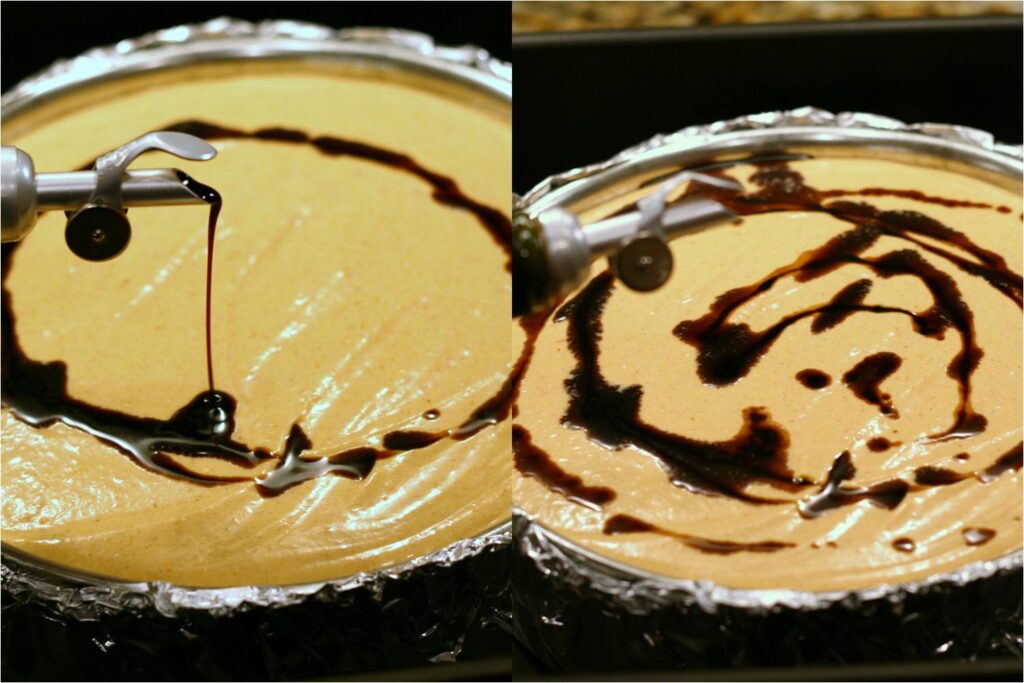
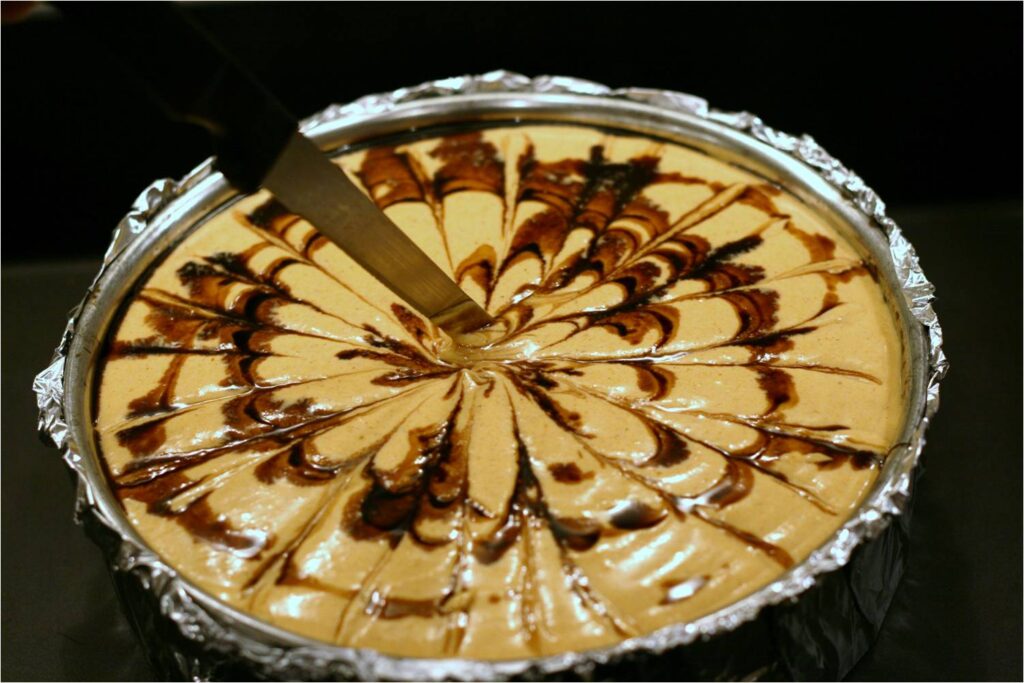
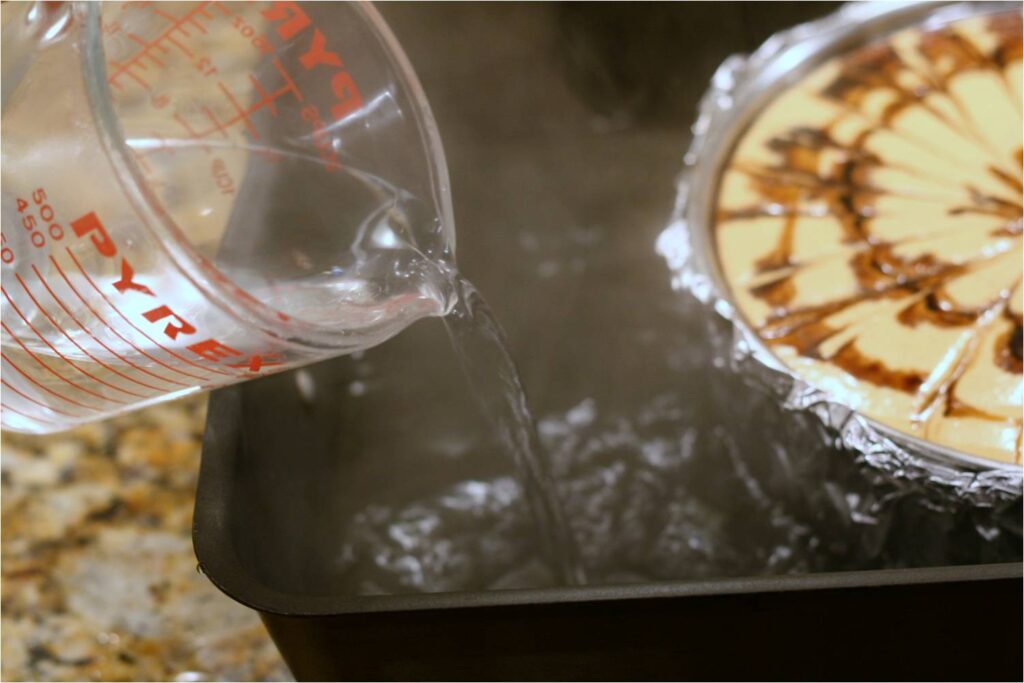
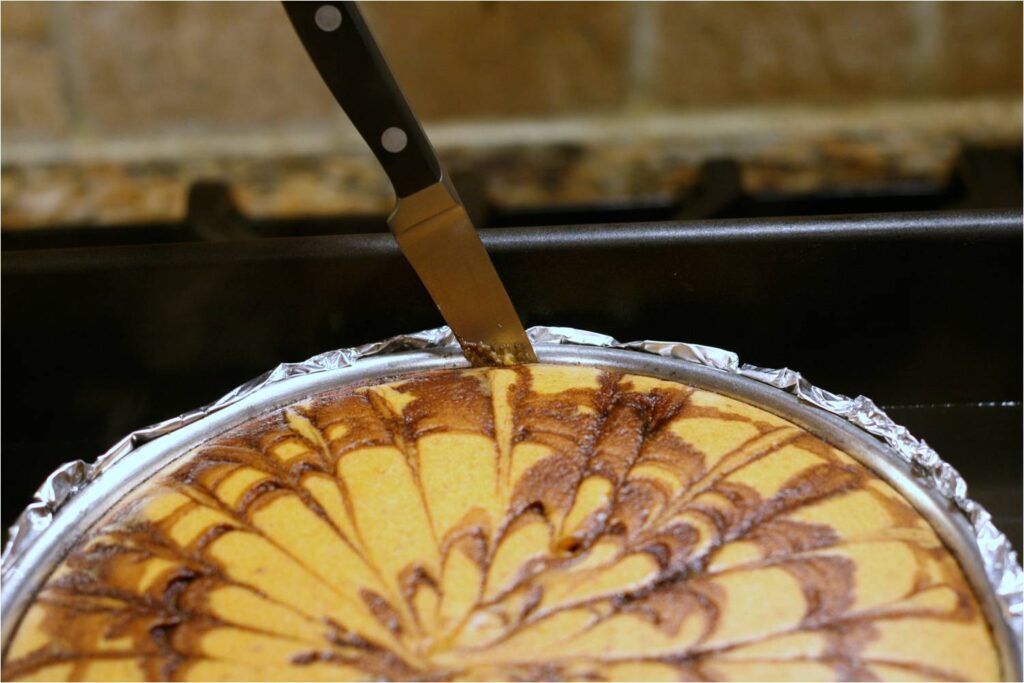
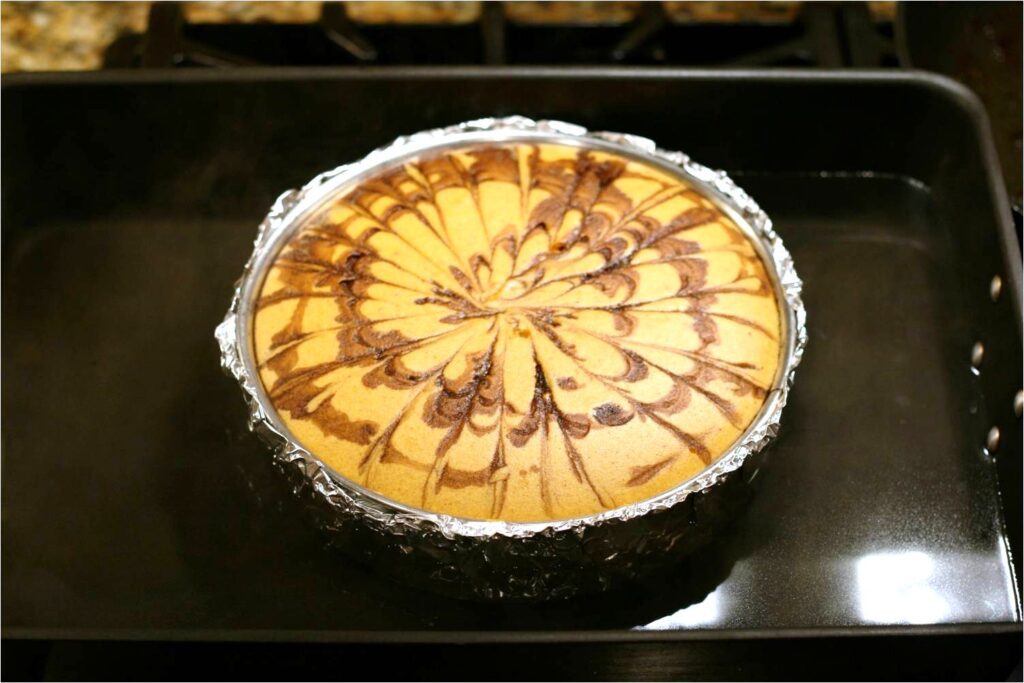
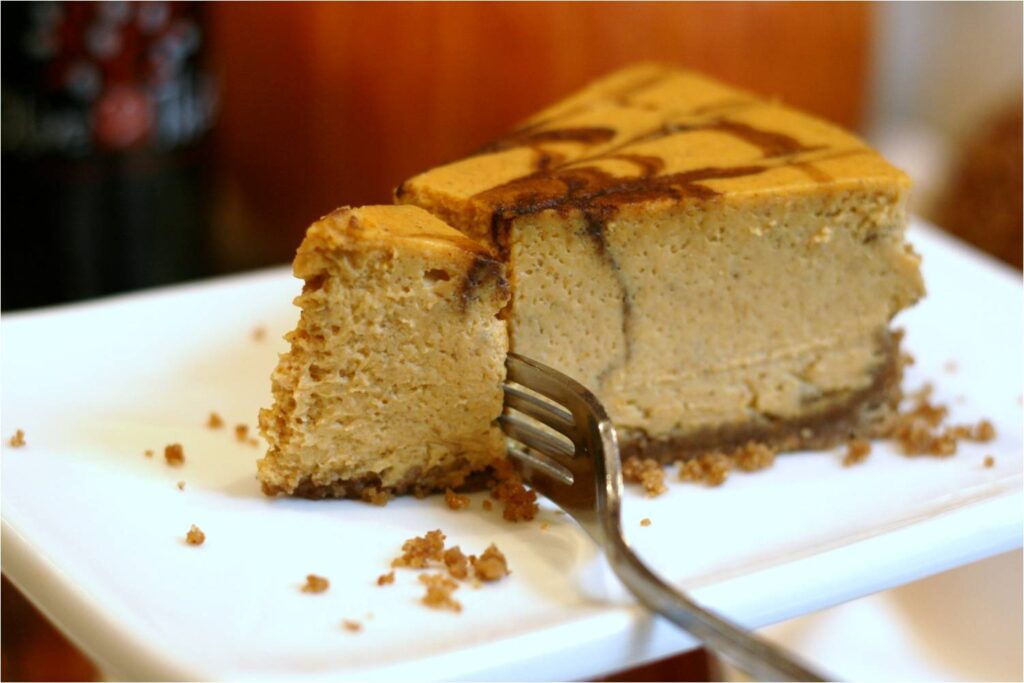
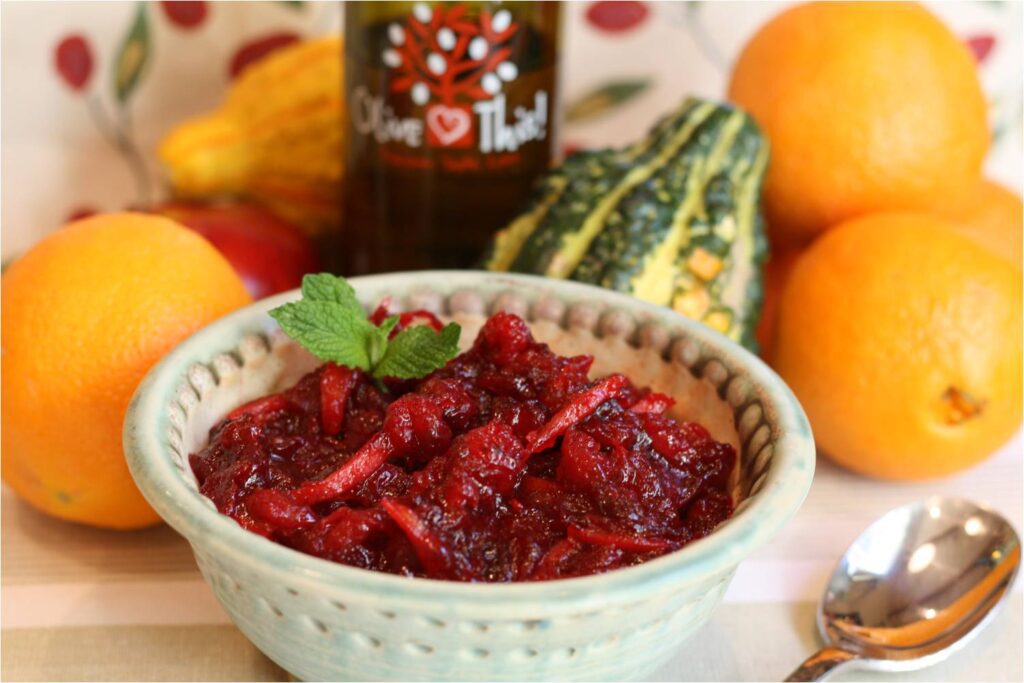
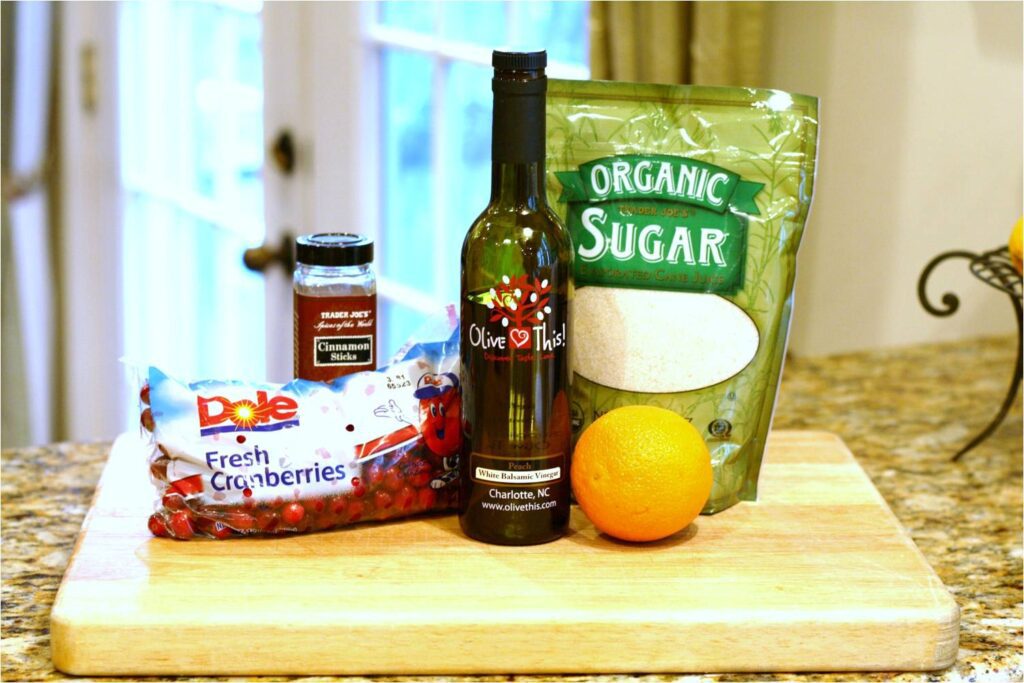
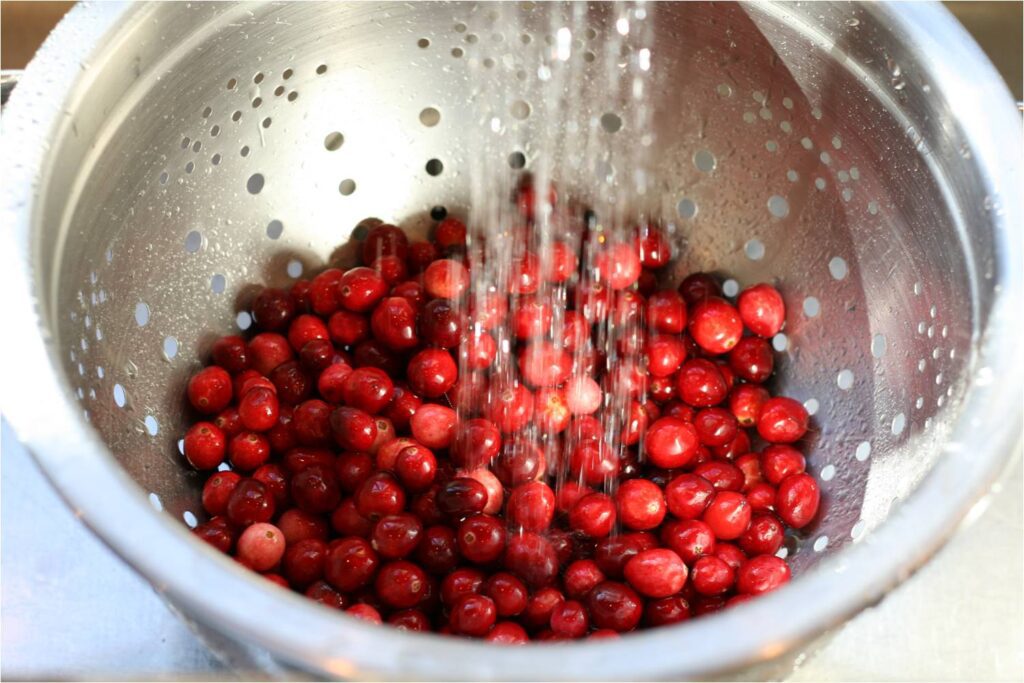
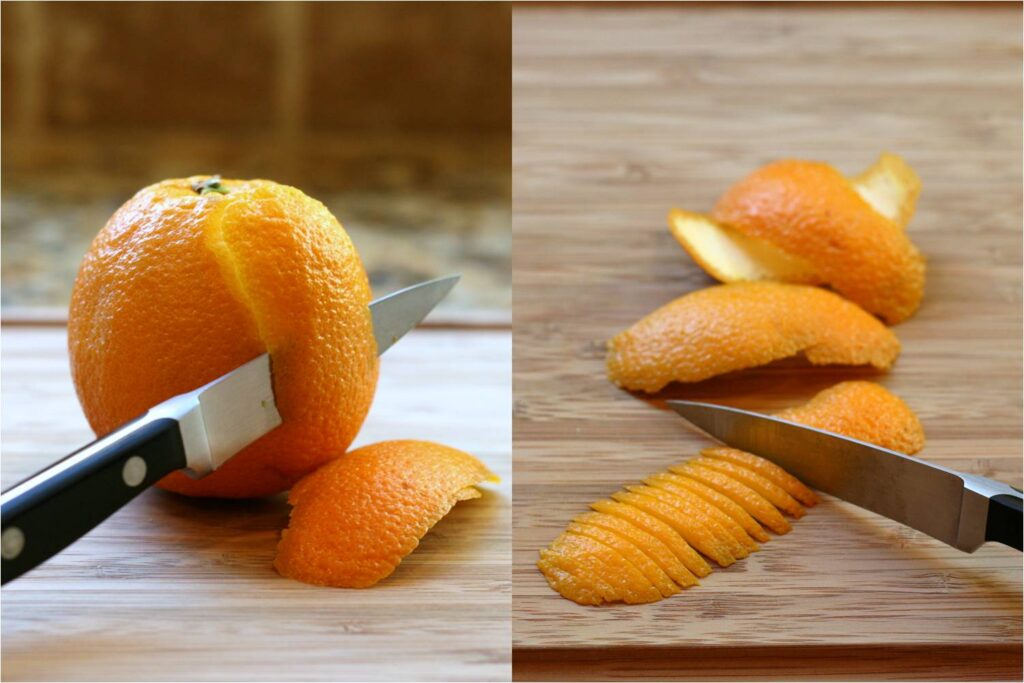
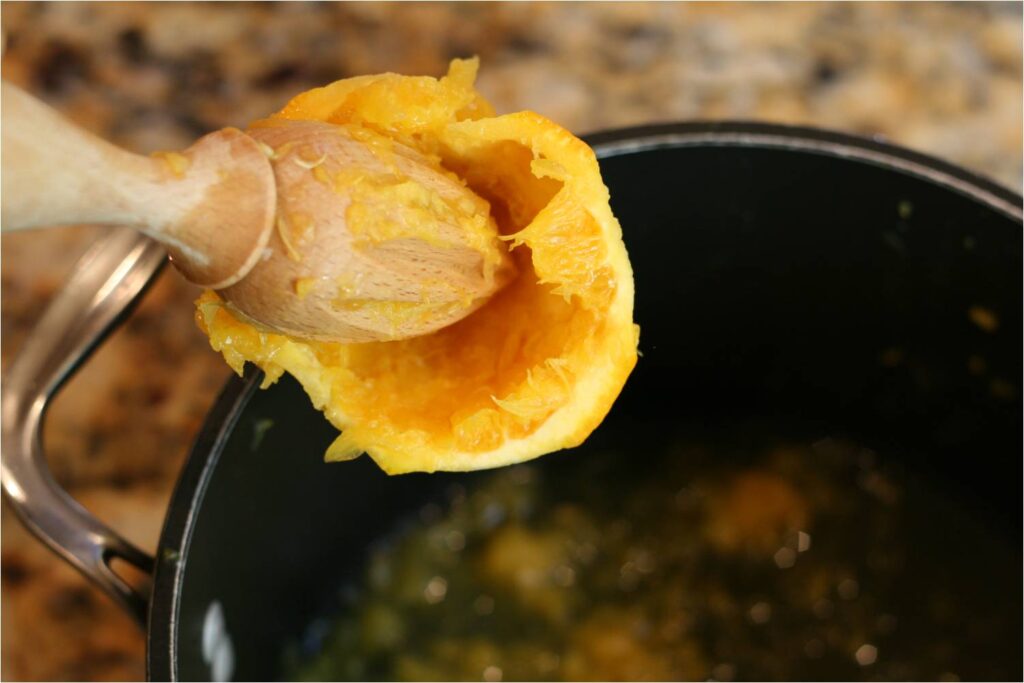
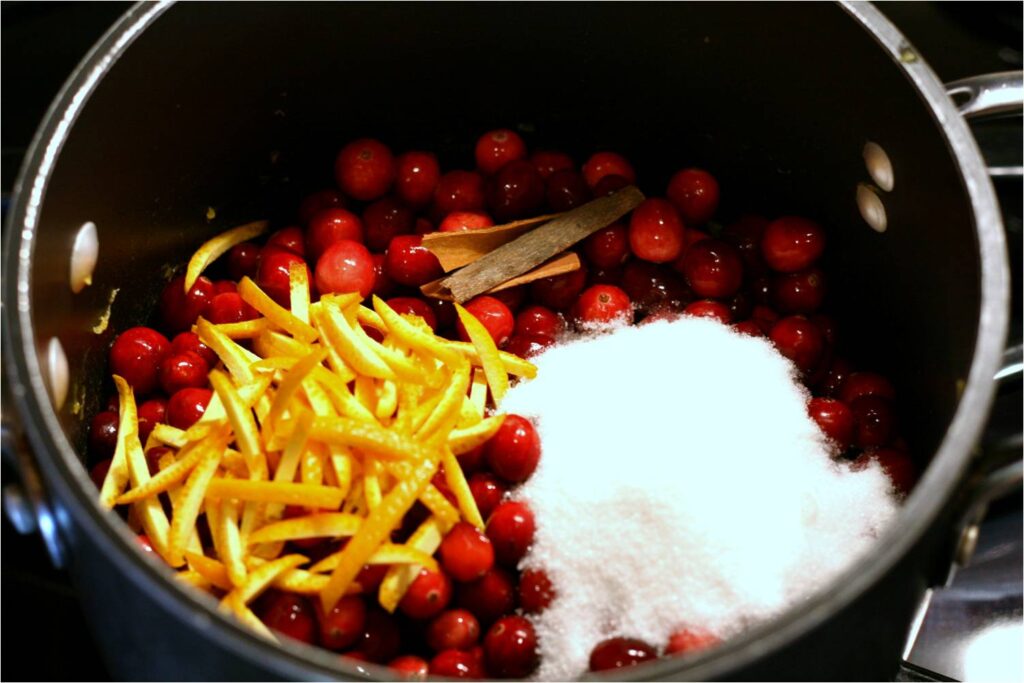
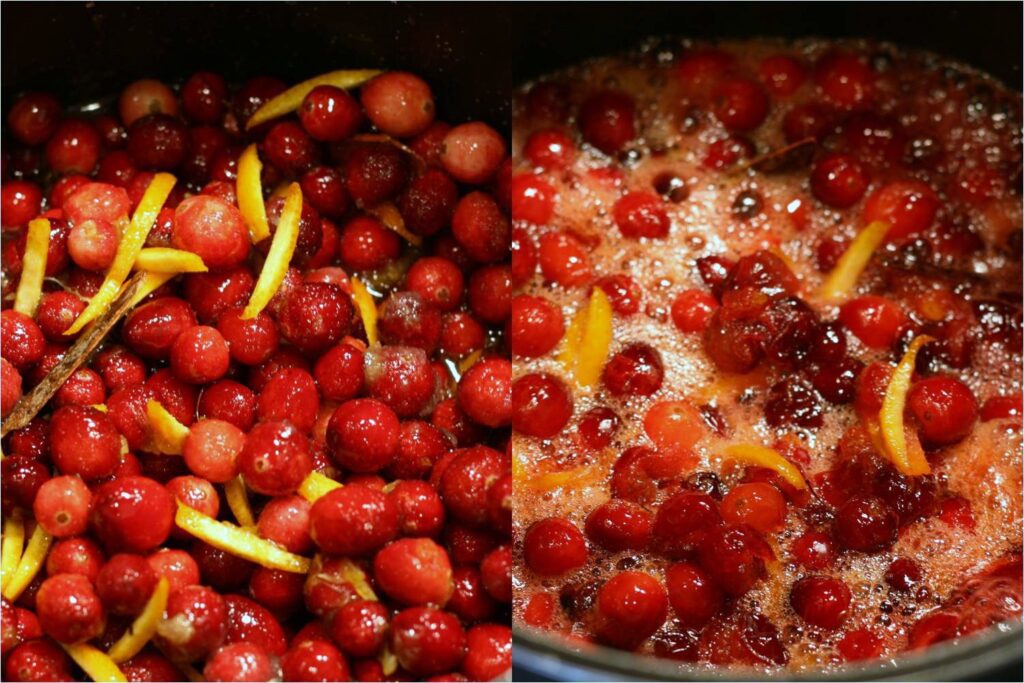
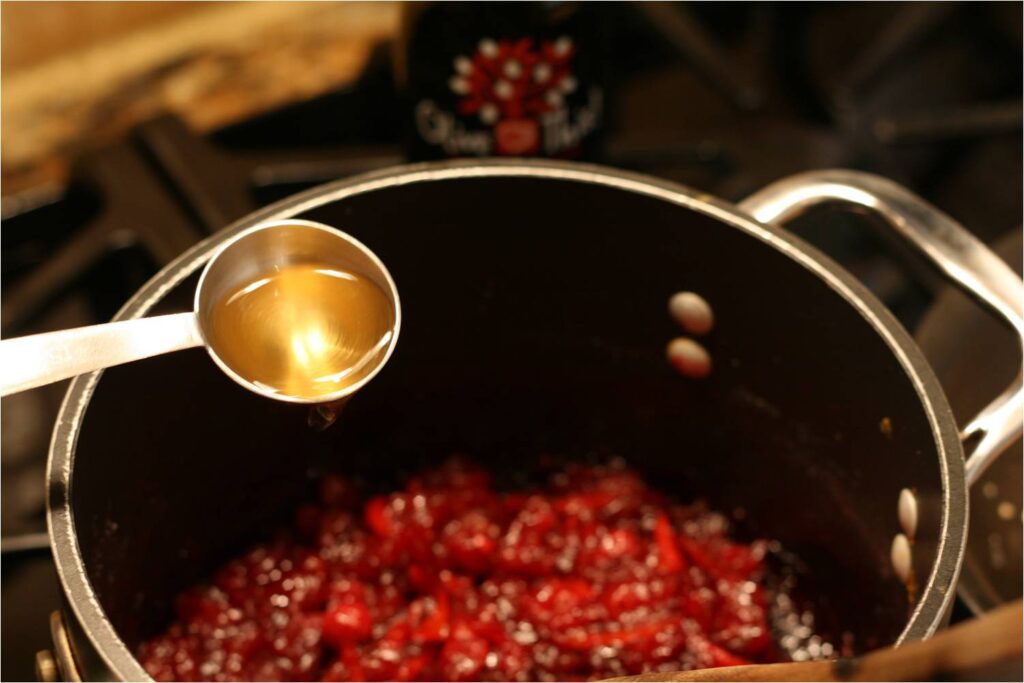
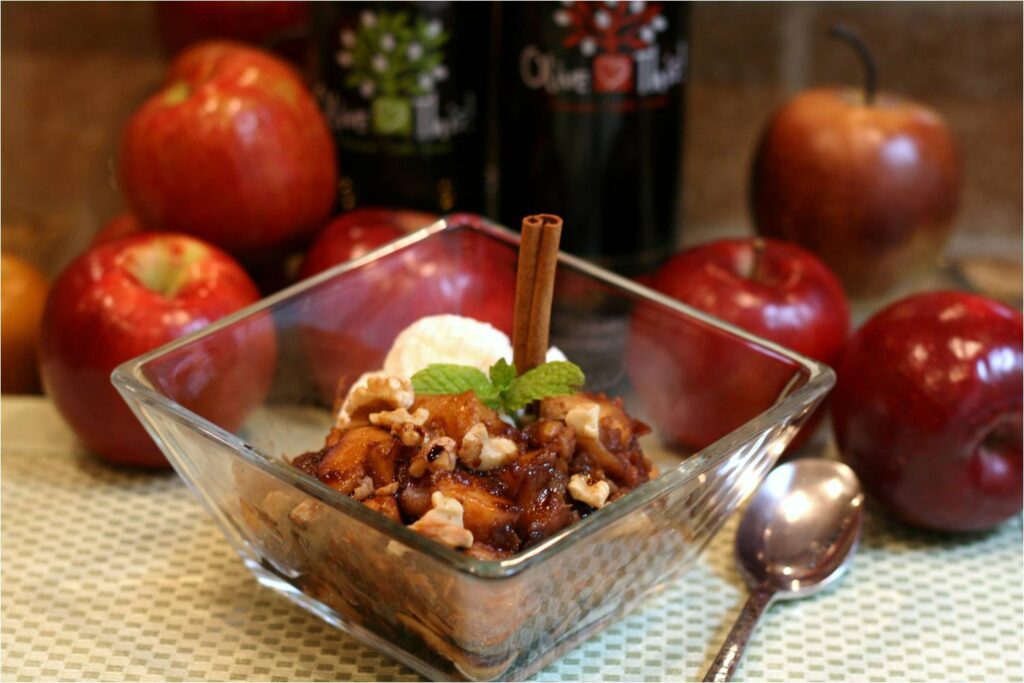
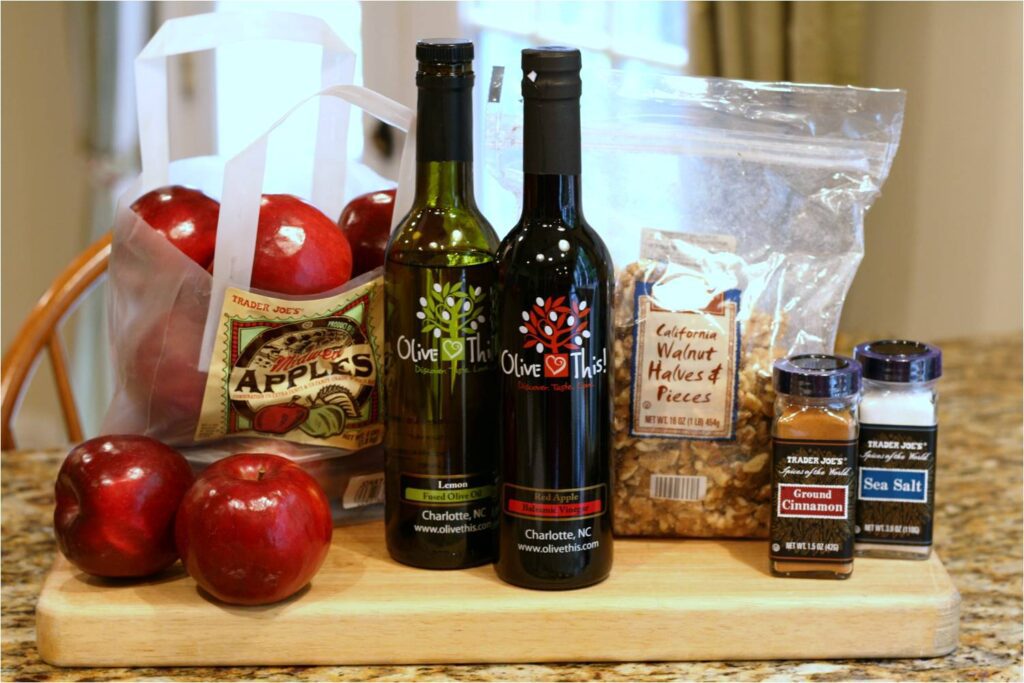

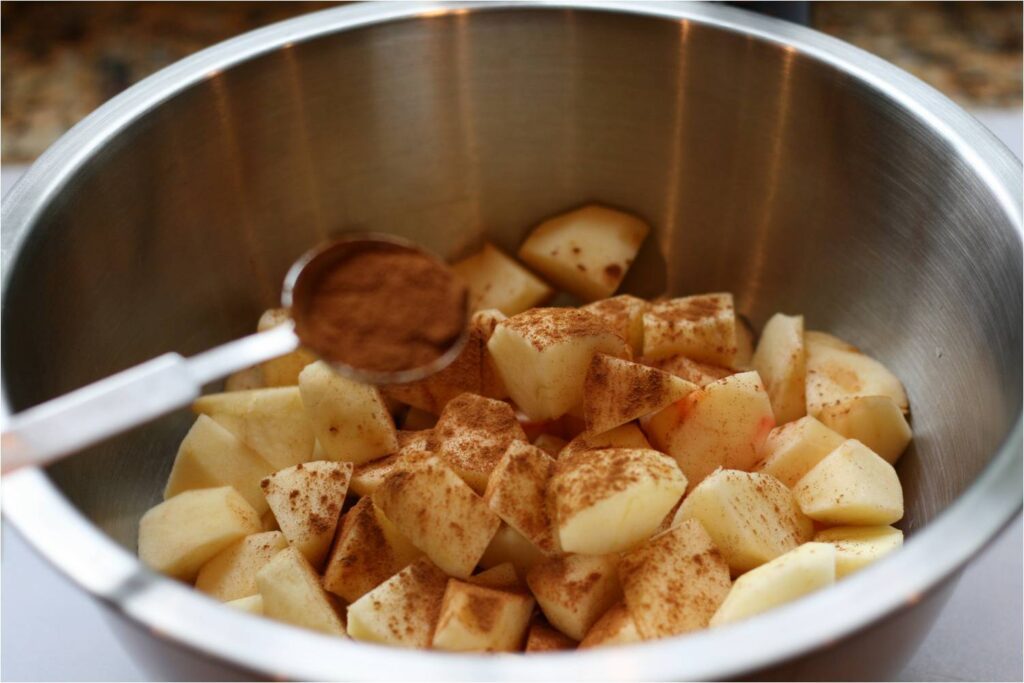


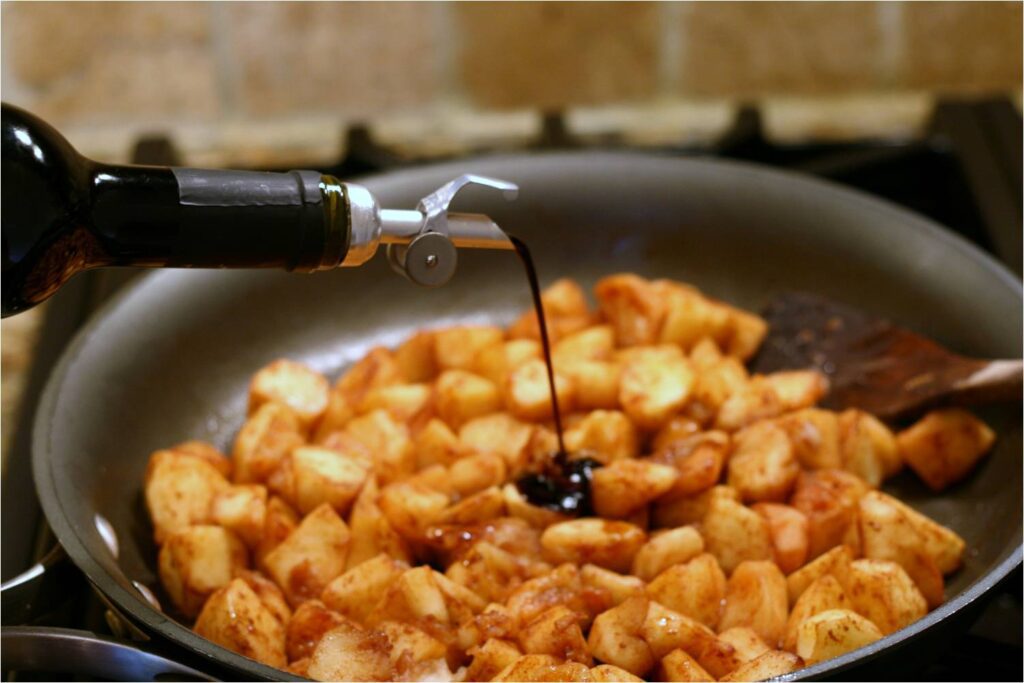
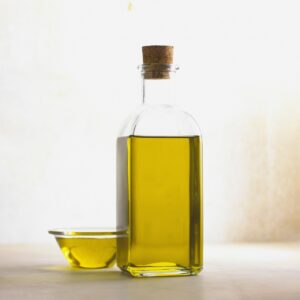
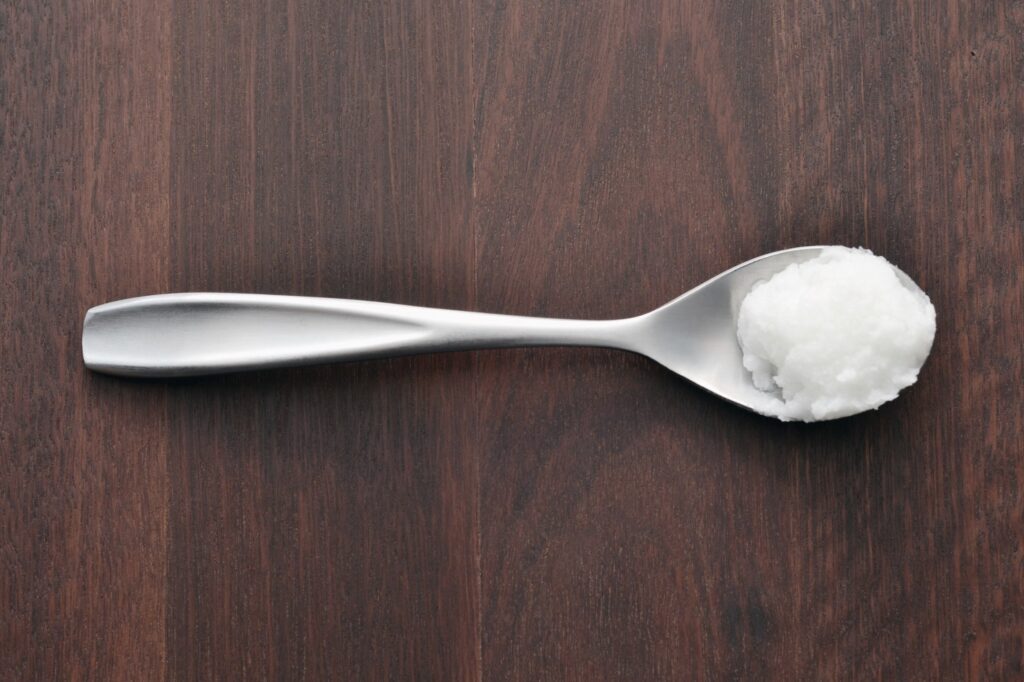

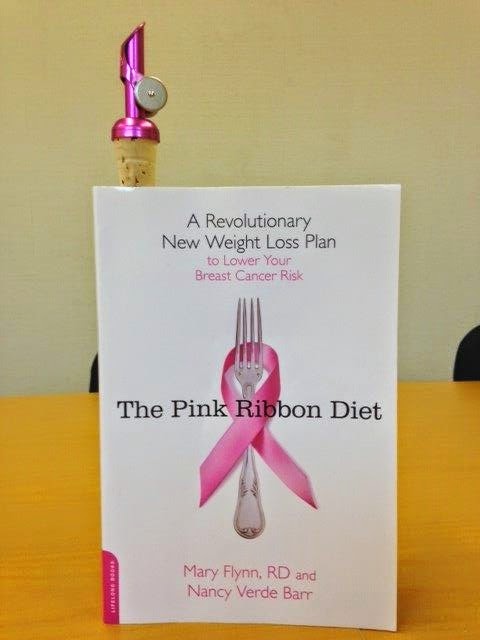



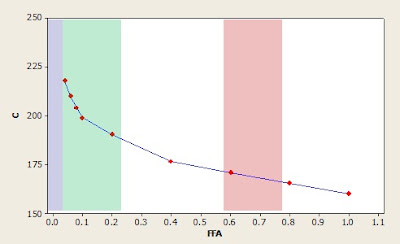


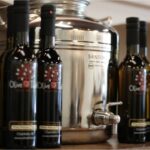
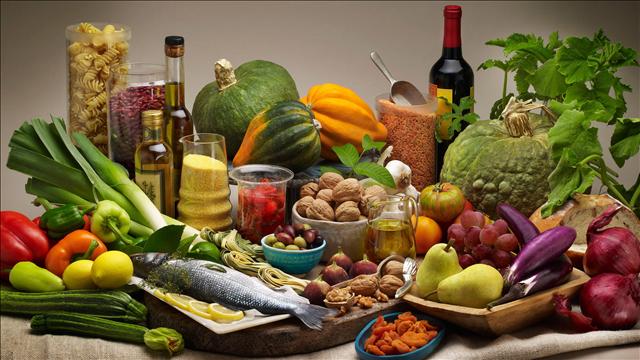 An
An 